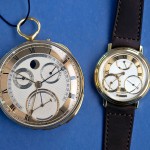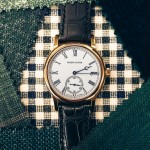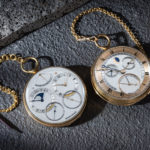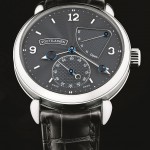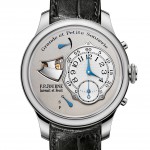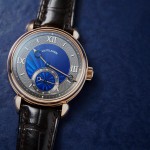Highlights: Independent Watchmaking at Phillips Geneva, with F.P. Journe, Daniel Roth, and Voutilainen
Historically significant creations.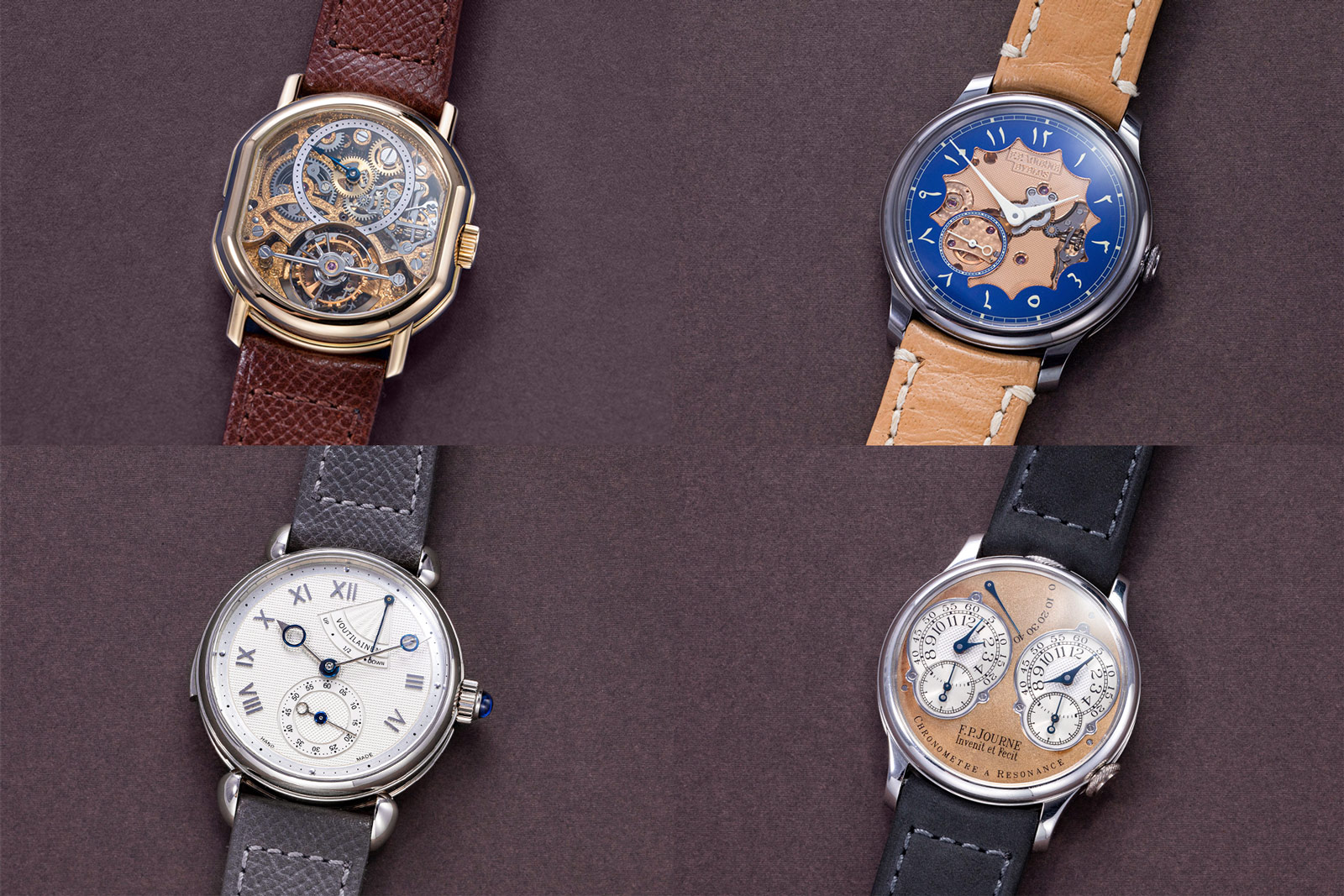
Phillips’ upcoming auction in Geneva is a 201-lot sale that comprises a myriad of rare and unusual timepieces. The selection of independent watchmaking at The Geneva Watch Auction: XV is particularly interesting, including several early and historically significant timepieces from high-profile brands.
We round up five of the most notable watches, ranging from an F.P. Journe Resonance from the year of its launch, as well as early, unique pieces from Daniel Roth and Kari Voutilainen, a skeleton, double-face tourbillon and Decimal Repeater respectively.
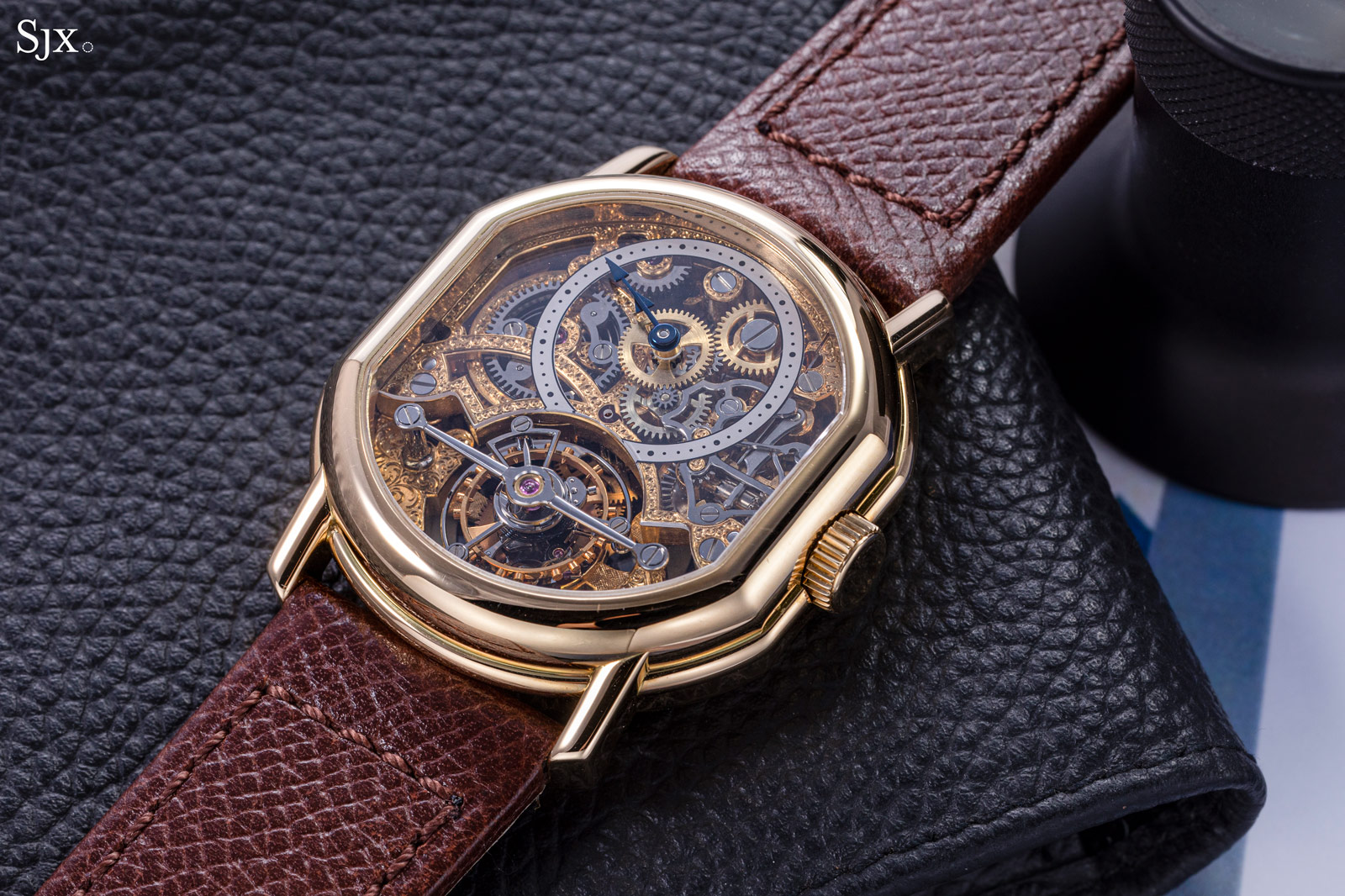
The Daniel Roth double-face tourbillon that is possibly unique thanks to the sapphire dials on both the front and back
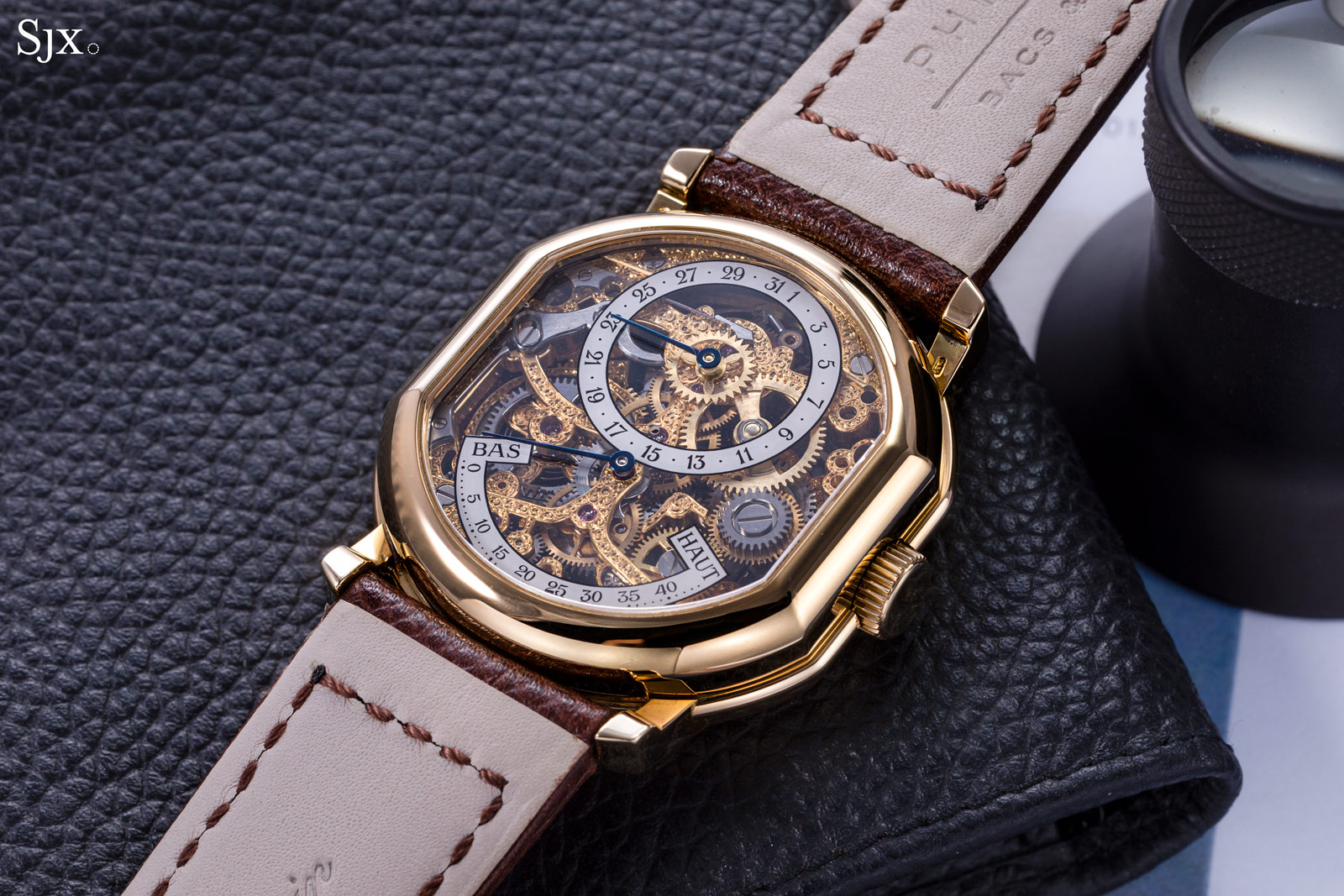
Granted, several of the watches we’re covering below will finish well into six figures. But even if you are not planning to bid, they are worth learning about. We provide a close look at rare watches that are rarely encountered.
That said, there’s an eminently affordable example of excellent, honest independent watchmaking in the sale: the Habring² Erwin “Star”, the first-ever SJX Edition that was launched last year to 10th anniversary of this site. Though a handful have sold on the secondary market since – including one that sold on Loupe This for US$15,400 – this is the first example to go under the hammer at a major, international auction house.
The Geneva Watch Auction: XV takes place at Hôtel La Réserve in Geneva, with the first session happening on May 7 and the second session on the day after. Registration for bidding and the full catalogue can be accessed here.
(All of the photos here are our own, except for those of the Erwin “Star” that were provided by Phillips.)
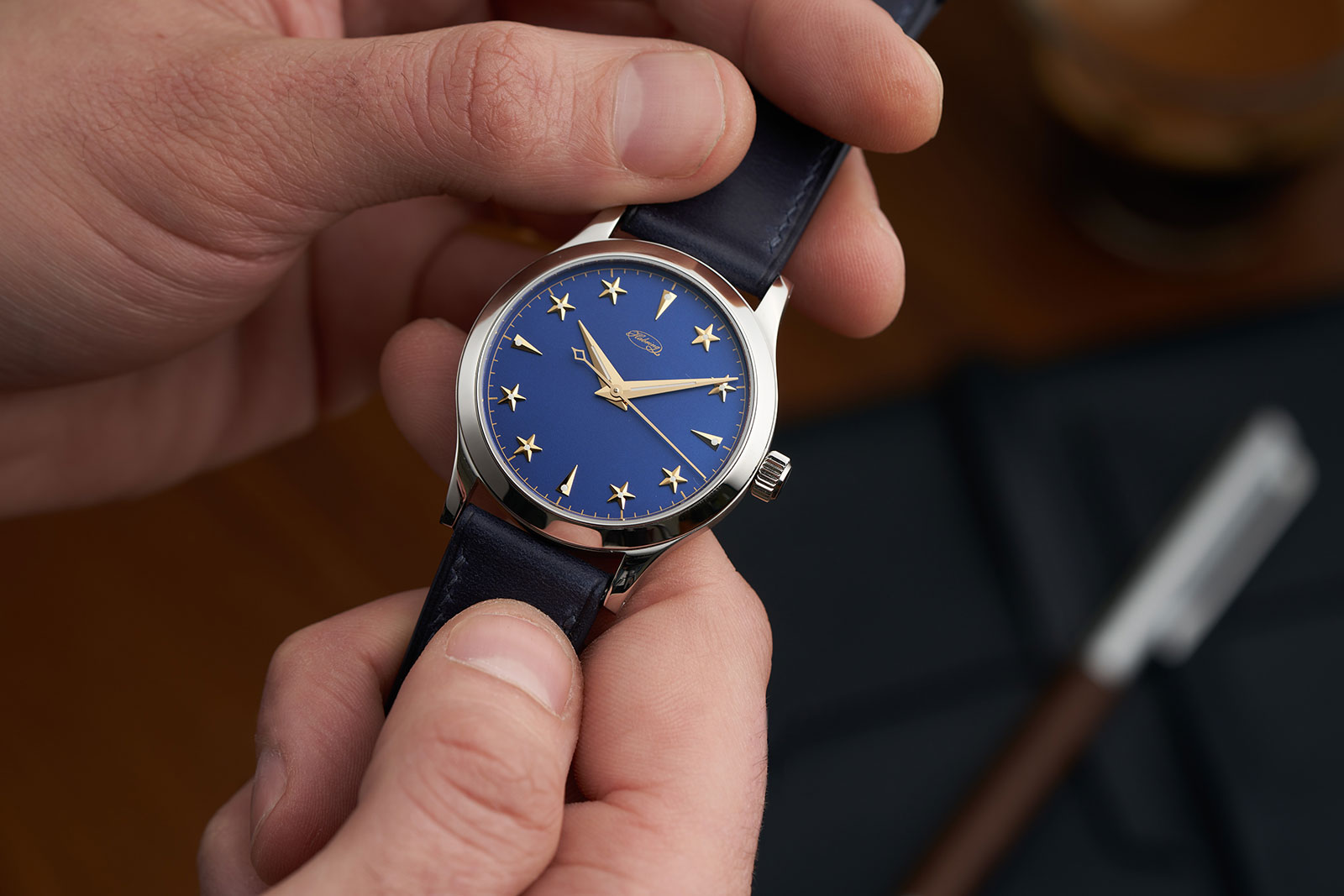
The Habring2 Erwin “Star” captured by Phillips
Lot 149: F.P. Journe Chronomètre Bleu Byblos with Eastern Arabic numerals
Conceived as an entry-level watch to stimulate demand following the Financial Crisis of 2008, the Chronométre Bleu has paradoxically evolved into one of the most desirable F.P. Journe watches. Set apart with its tantalum case and mirrored, blue dial, its secondary-market value has leapt to multiples of the retail price.
But the standard Chronométre Bleu has been produced in large quantities, representing some 10% of the brand’s annual production each year. So collectors looking something more special will eventually land on the Byblos edition, a limited edition of 99 pieces made in 2014 when the brand opened its first boutique in the Middle East.
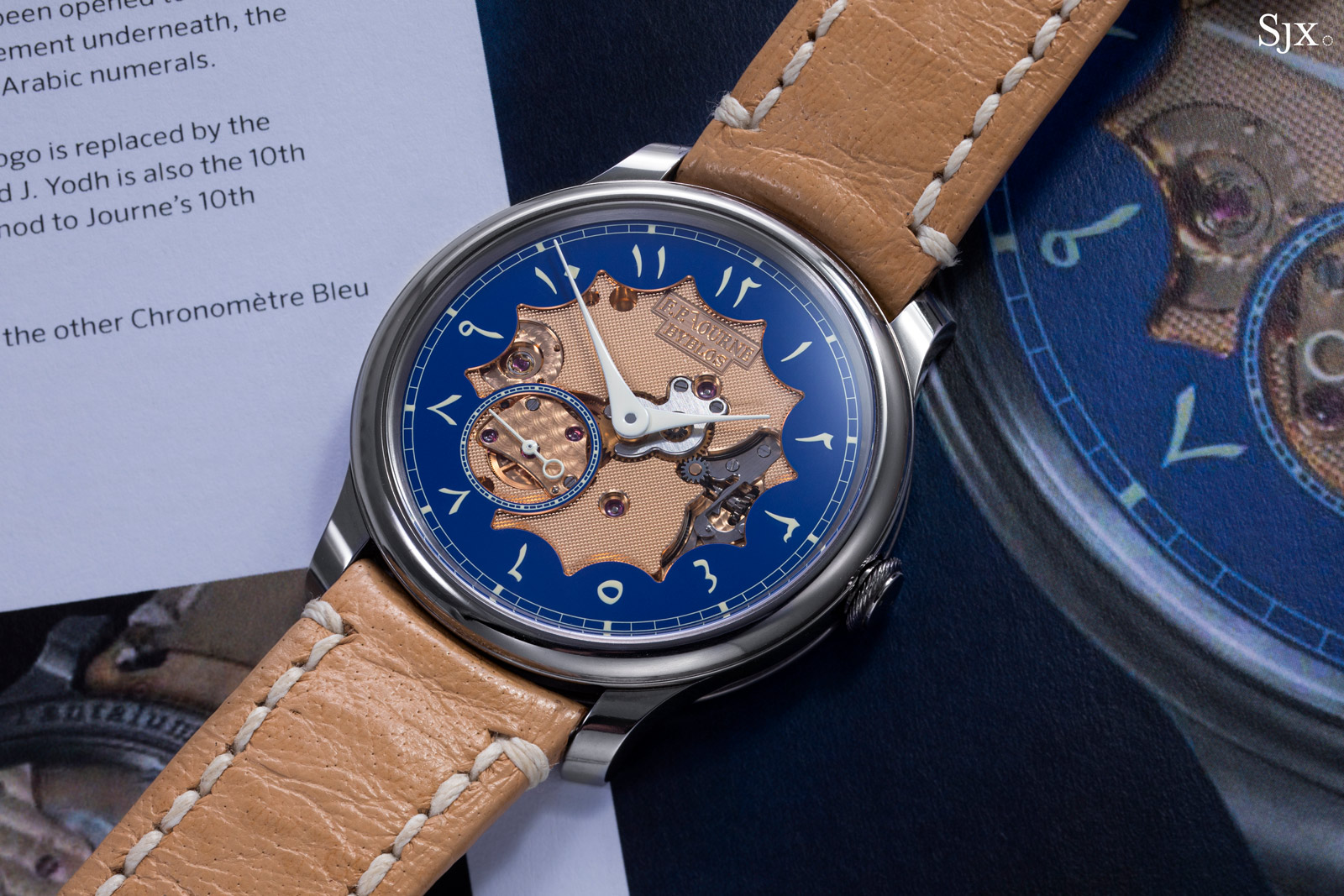
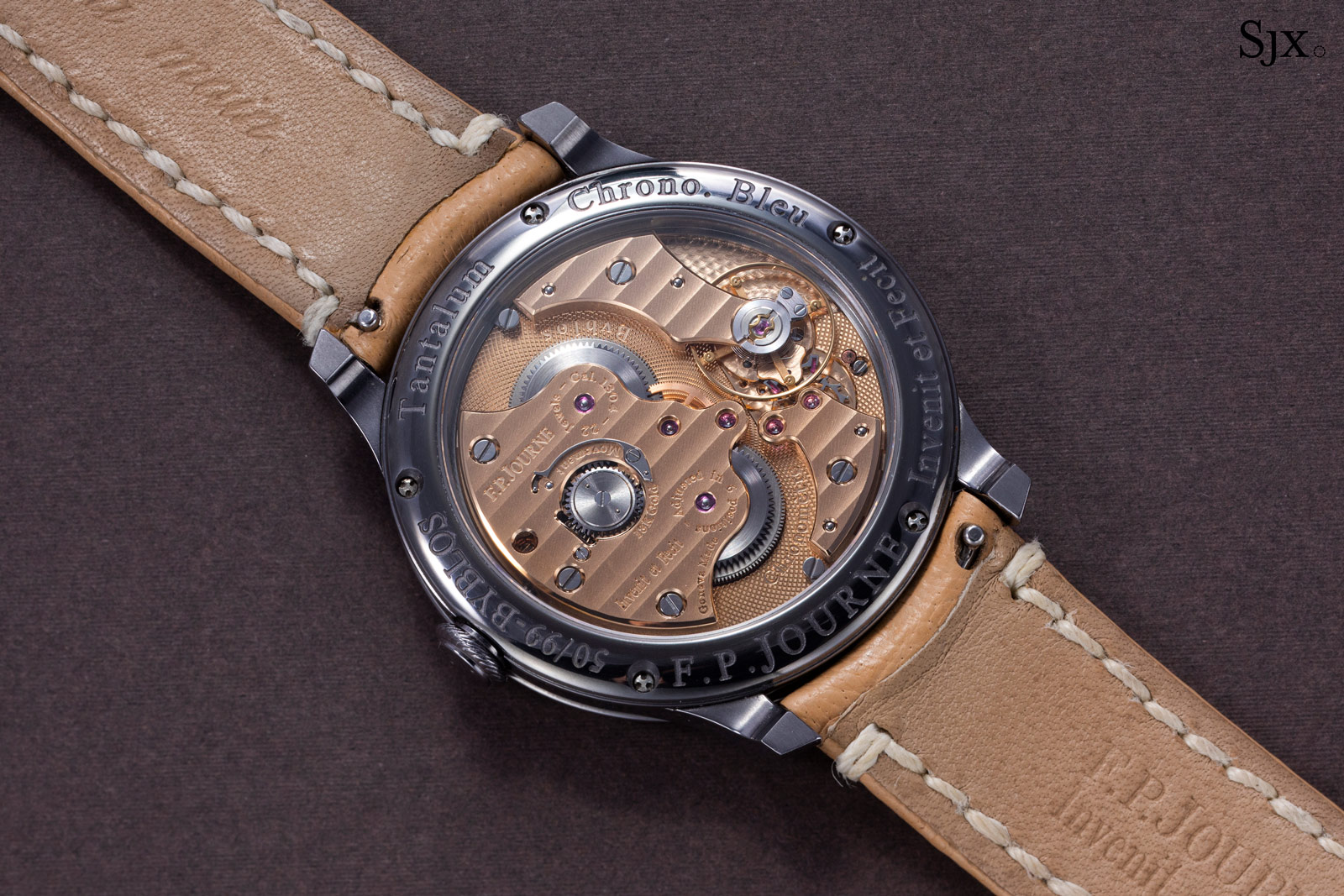
The calibre inside the Byblos, which is identical to the movement in the standard Chronometre Bleu, and almost identical to the movement inside the Chronometre Souverain
Identical to the standard Chronometre Bleu save for its face, the Byblos has a dial that is actually just a chapter ring for the hours rendered in bright blue, a tone eminently different from the reflective, deep blue that characterises the standard Chronometre Bleu. Revealing the red gold base plate underneath, the chapter ring has a scalloped inside edge that’s meant to evoke the Sun.
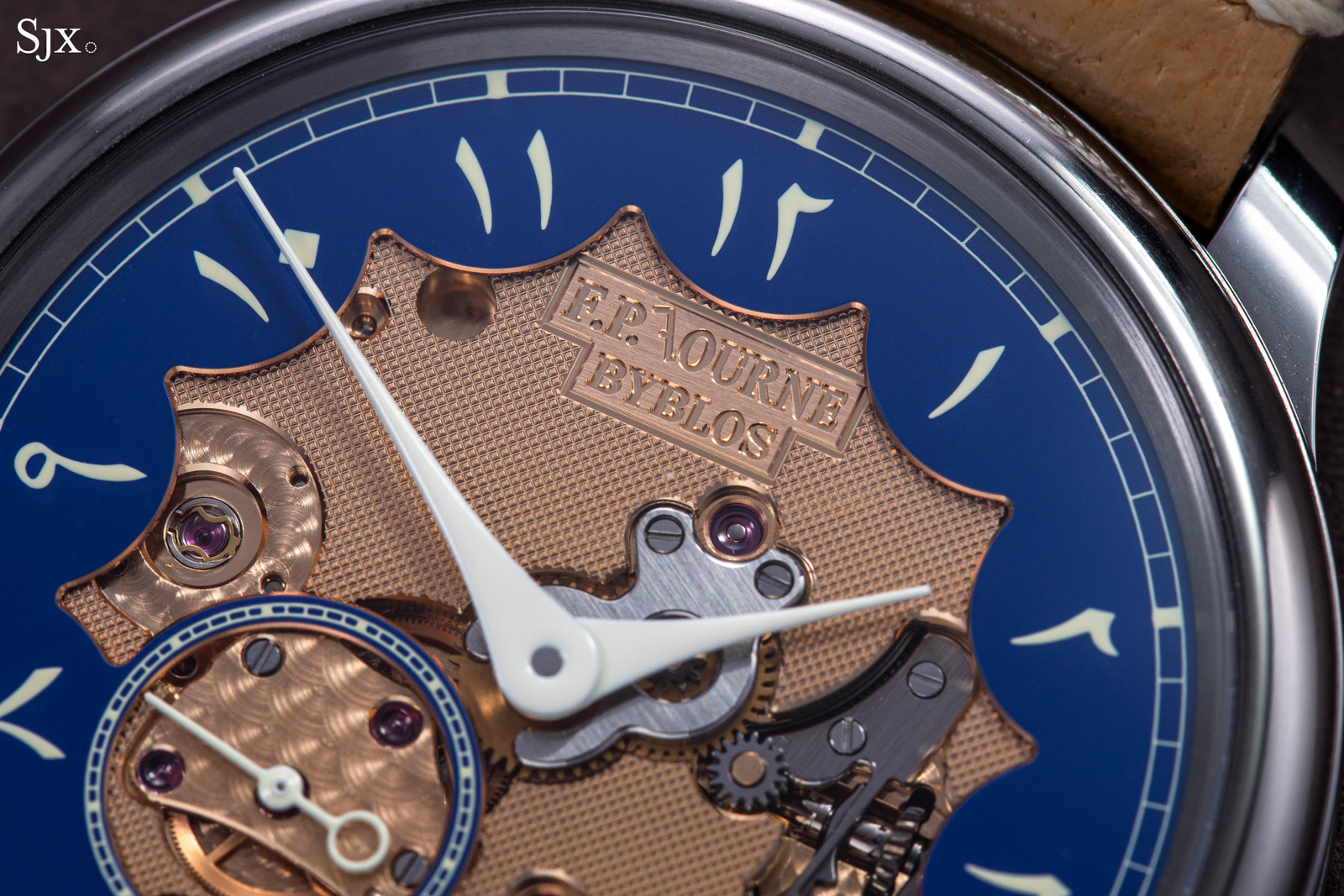
Engraved on the base plate is the brand’s logo as well as “Byblos”, the ancient city of 10,000 years ago that’s located in modern-day Lebanon, the location of the brand’s boutique
Of the 99-piece run, 20 watches feature a dial with Eastern Arabic numerals, which has naturally increased their desirability. While the regular-dial variant was sold at F.P. Journe boutiques worldwide, the Eastern Arabic dial versions were primarily sold only in the Middle East.
And unlike the Arabic numeral dial that has a shrunken “7” and “8” to accommodate the seconds, the Eastern Arabic dial has its hour numerals in a single font size around the dial.
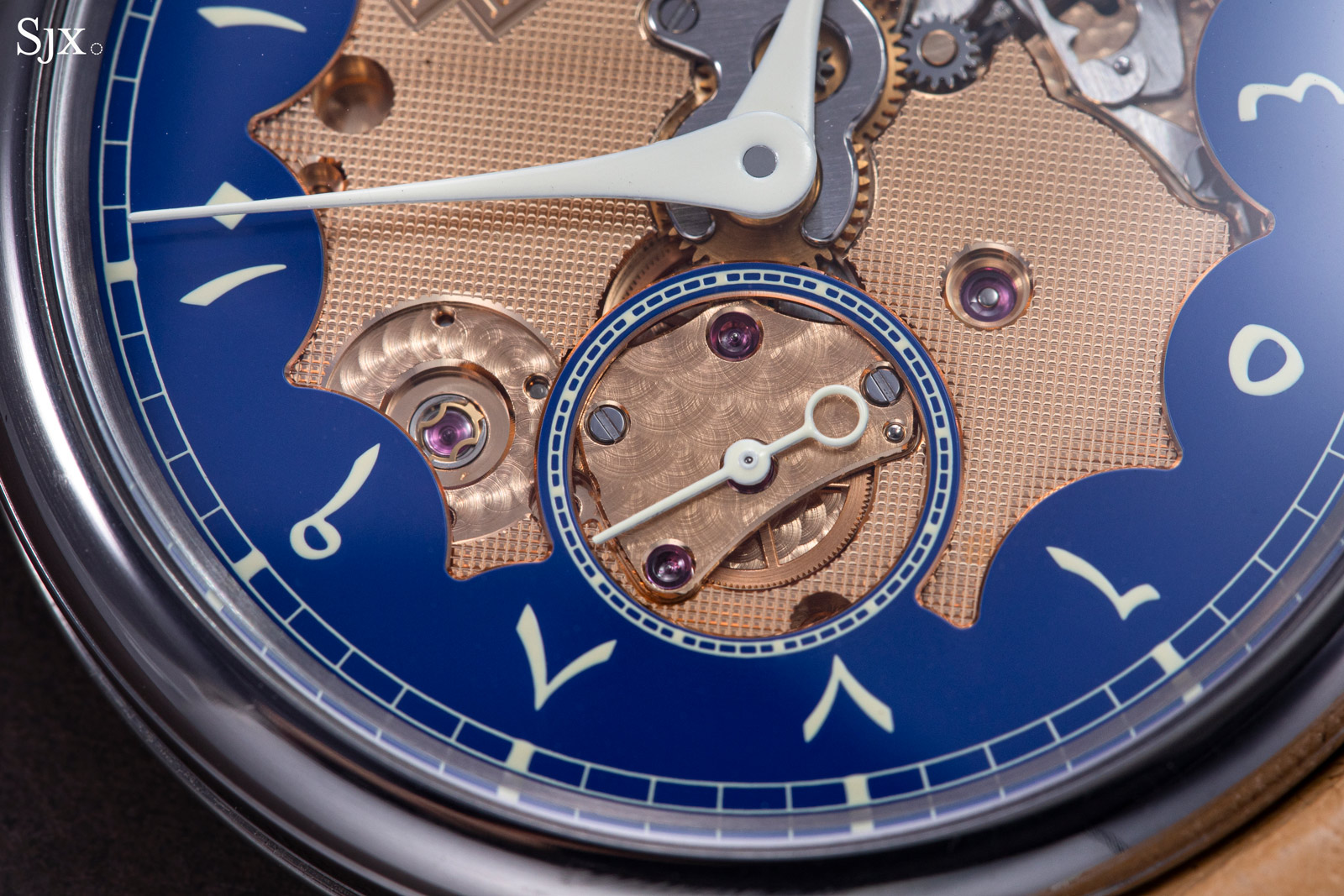
The Chronométre Bleu Byblos with Eastern Arabic numerals dial is in mint condition and includes the original box and papers. It has an estimate of CHF100,000-200,000, or about US$106,000-212,000.
For an idea of relative value, Sotheby’s just sold the more common version of the Byblos with Arabic numerals for a bit over US$270,000 in late April 2022.
Full lot details here.
Lot 187: F.P. Journe Chronomètre à Resonance, first-year with brass movement
While the Chronomètre Bleu is the arguably the most “hyped” F. P. Journe (alongside the quartz Elegante), aficionados of the brand will appreciate its more historically important watches.
The best known of these early watches is the Tourbillon Remontoir d’Egalite, but equally significant is the Chronomètre à Resonance – they are two of the three inaugural models launched by Francois-Paul Journe at the turn of the millennium, with the third being the Octa Reserve de Marche.
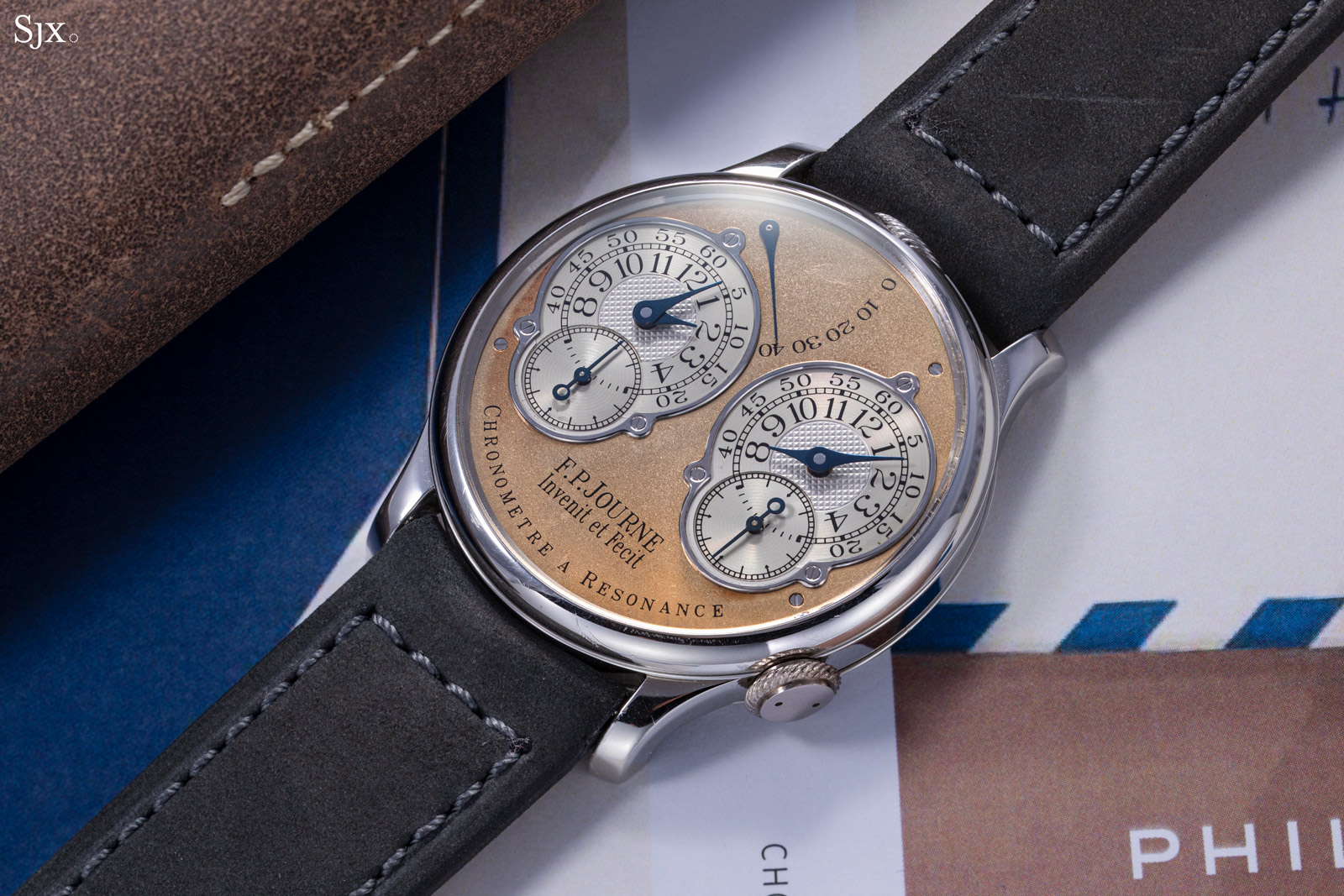
The Resonance represents Mr Journe’s interpretation of a historical solution to precision timekeeping that was pursued by greats like Antide Janvier. A quick recap of its fundamentals: the movement is equipped with two gear trains and and two balance wheels that are placed close to each other but with no mechanical connection. Because both balance wheels beat at the their natural frequencies right next to each other, they eventually oscillate in resonance, boosting the amplitude of both, increasing their inertia and timekeeping stability.
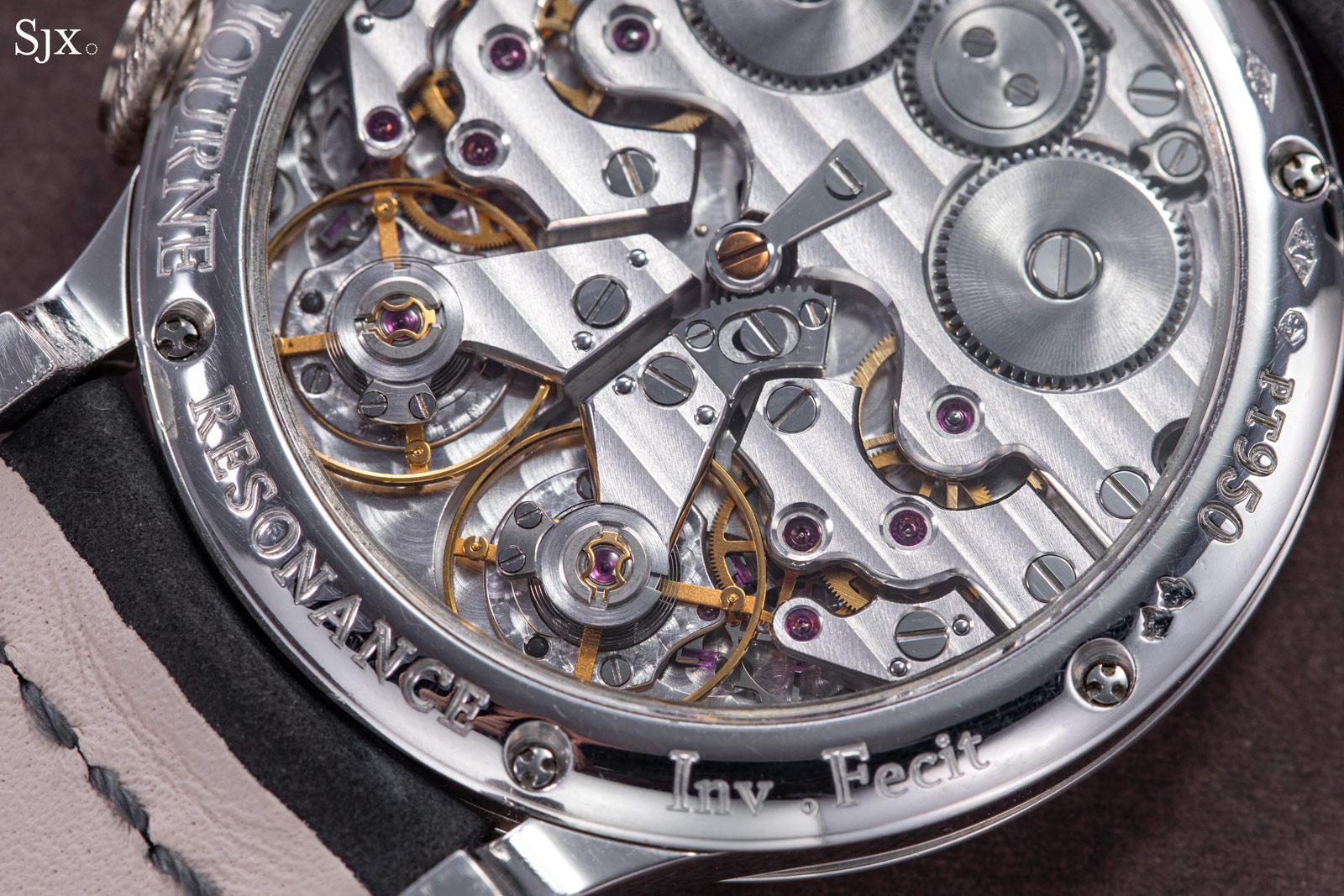
The present example is an early example of the Resonance and bears all the hallmarks that set apart the first examples. The dial has a shiny, grained surface, while the registers still bear concentric machining marks – both show evident signs of ageing that often develops on early watches.
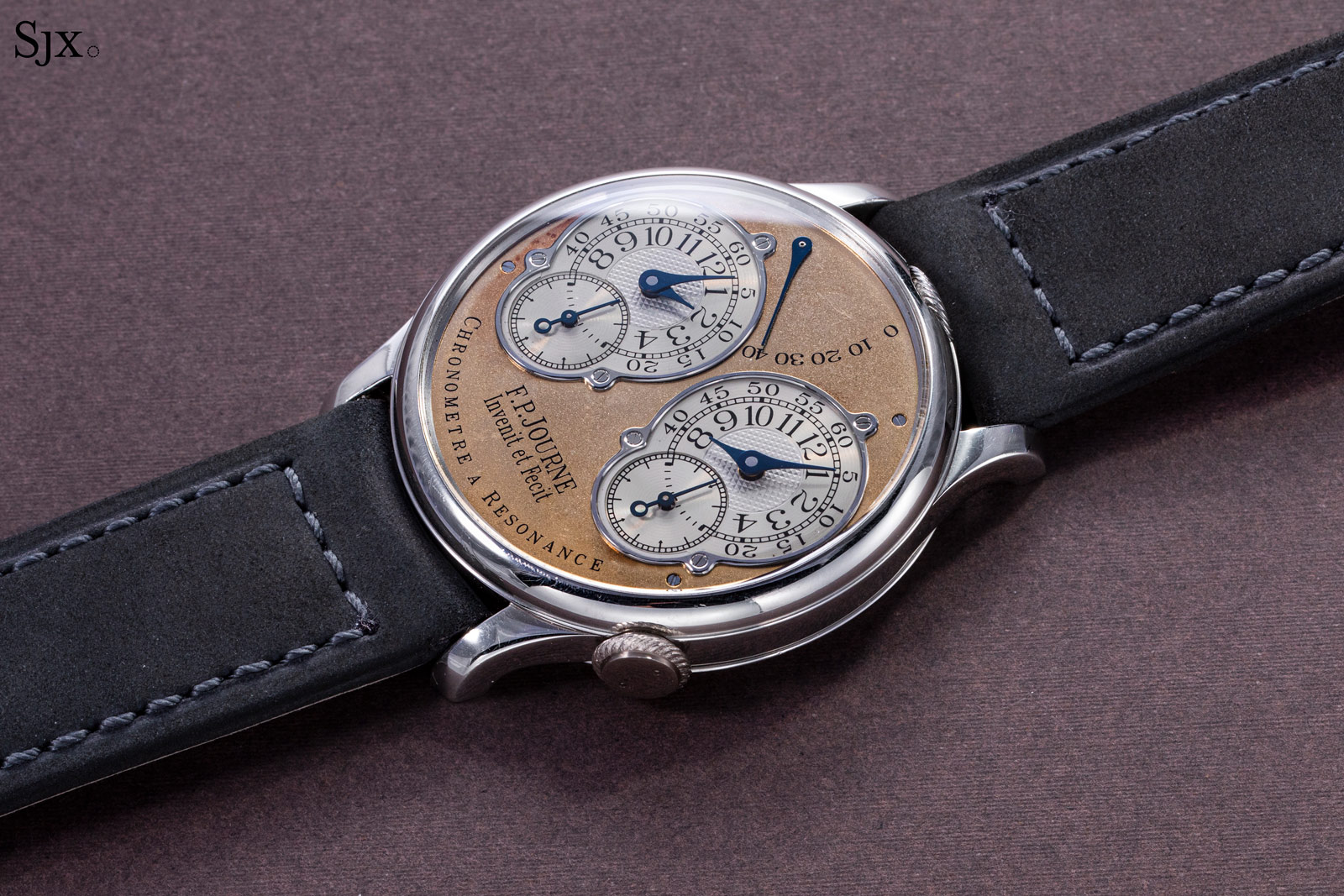
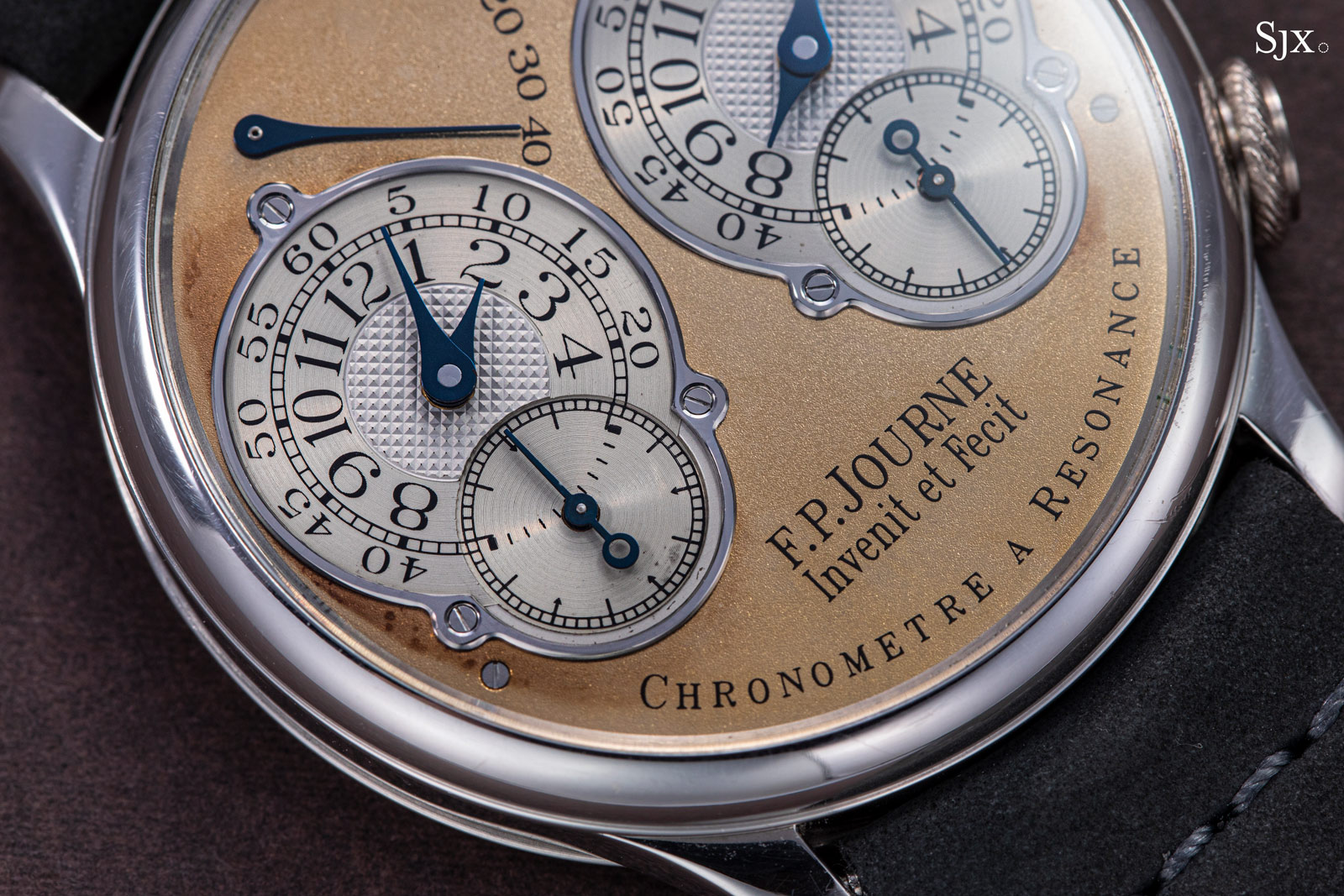
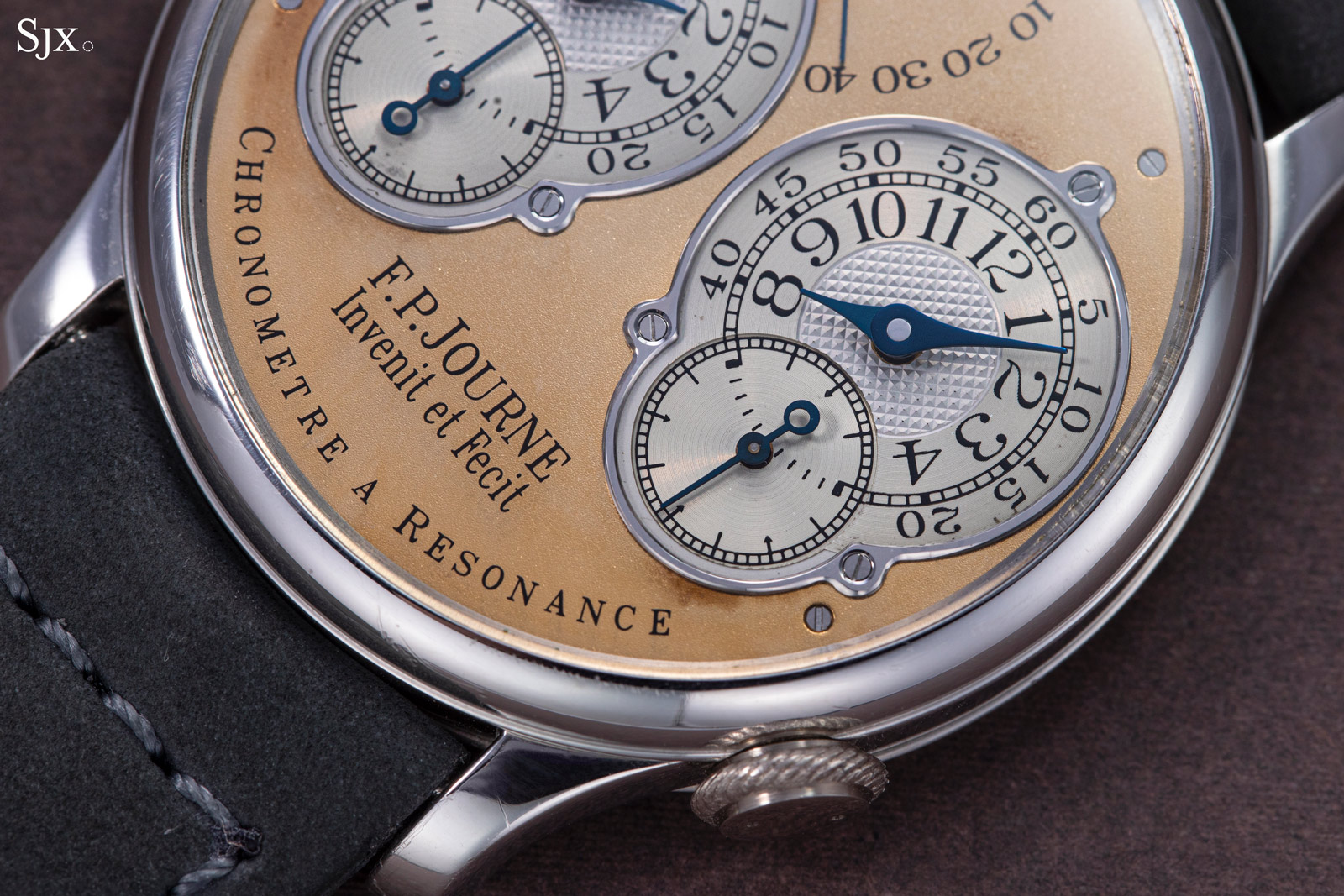
Interestingly, this watch has a case number of “067/01R”. On its face, that would imply it was made in 2001, hence the “01” suffix. But according to the certificate issued by F.P. Journe, the watch was actually delivered to the United States in 2000, meaning it comes from the first year of Resonance production. It is known as F.P. Journe sold several “01” cases in 2000, since the cases were ordered in advance of production. Such nuances again illustrate the surprises and peculiarities often encountered in the start-up period of a brand.
That said, this example has the deeper engraving case back engraving that characterises early, but not the earliest watches. The very first batch of Resonance watches, now known as “pre-Souscription”, sport case back engraving that is akin to shallow etching.
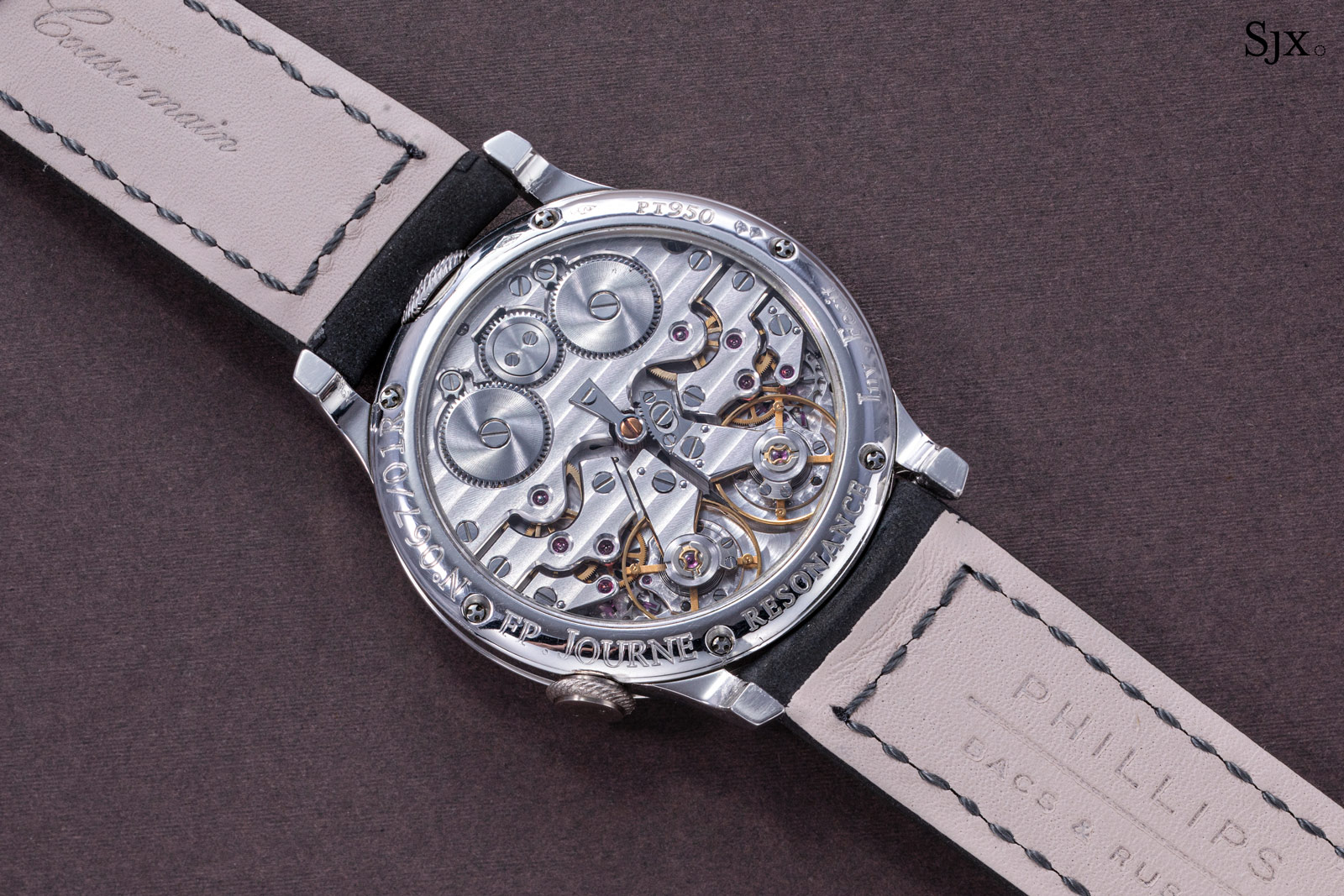
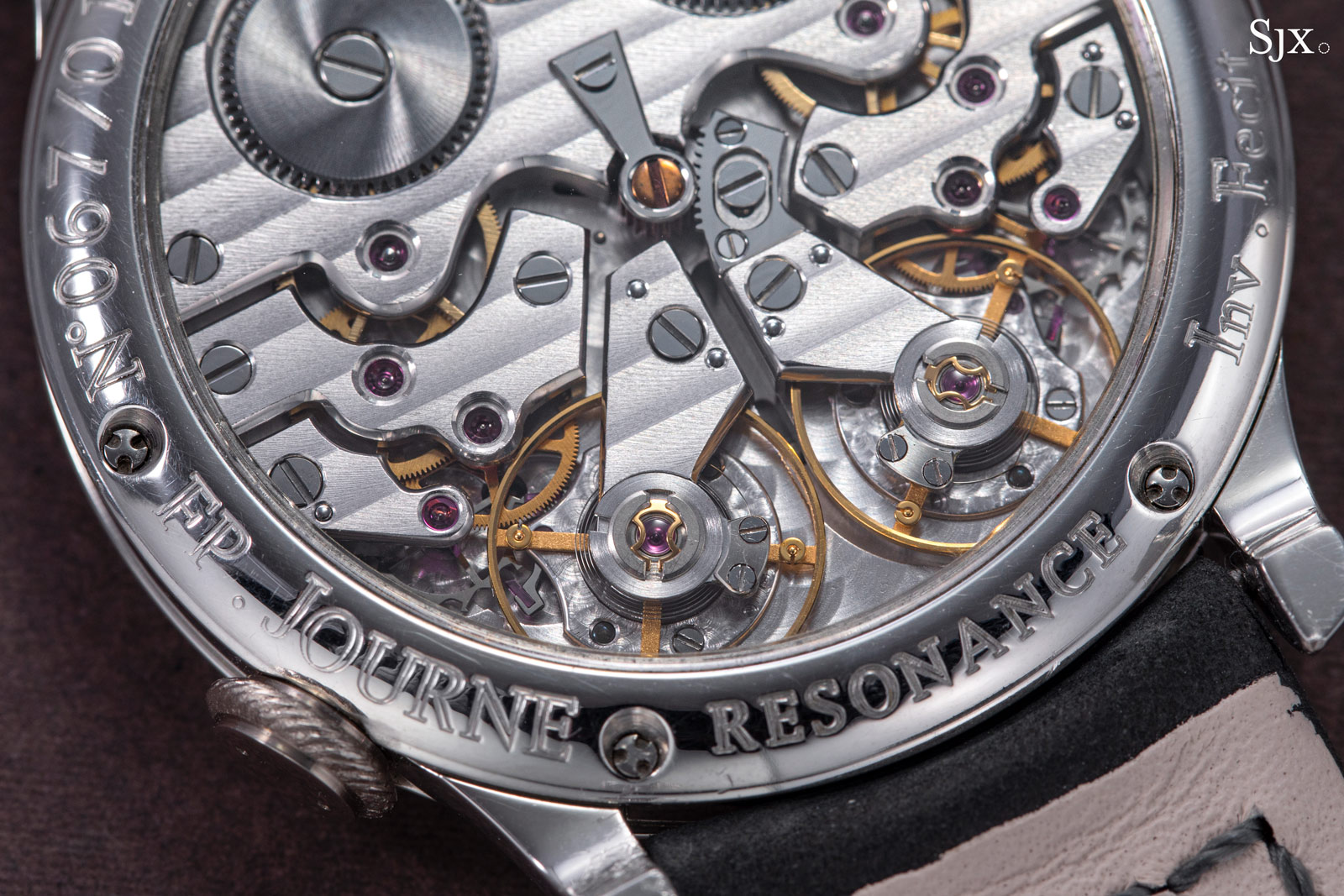
Consigned by an eminent Asian collector who is known to us, the Resonance has impeccable provenance. It is accompanied by a Certificate of Authenticity recently issued by F.P. Journe as well as a period-correct box. It has an estimate of CHF150,000-300,000, or about US$159,000-319,000. Full lot details here.
Lot 208: Daniel Roth Skeleton Double-Face Tourbillon No. 1
An independent watch brand that’s experiencing a resurgence is Daniel Roth, a brand set up by its eponymous founder in 1989 that had its heyday in the 1990s. The brand’s watches were distinguished by the high-quality movement from the very best suppliers that were housed in the scrumptious double-ellipse case designed by Mr Roth.
Like many independent watch brands of its era, Daniel Roth was characterised by ups and downs, but unfortunately it never recovered from its last crisis, which saw the brand being sold. Now owned by Bulgari, the name has been dormant for over a decade. Despite that, the earliest offerings from the brand are desirable, as they represent the style and execution that defined Mr Roth’s early ambitions.
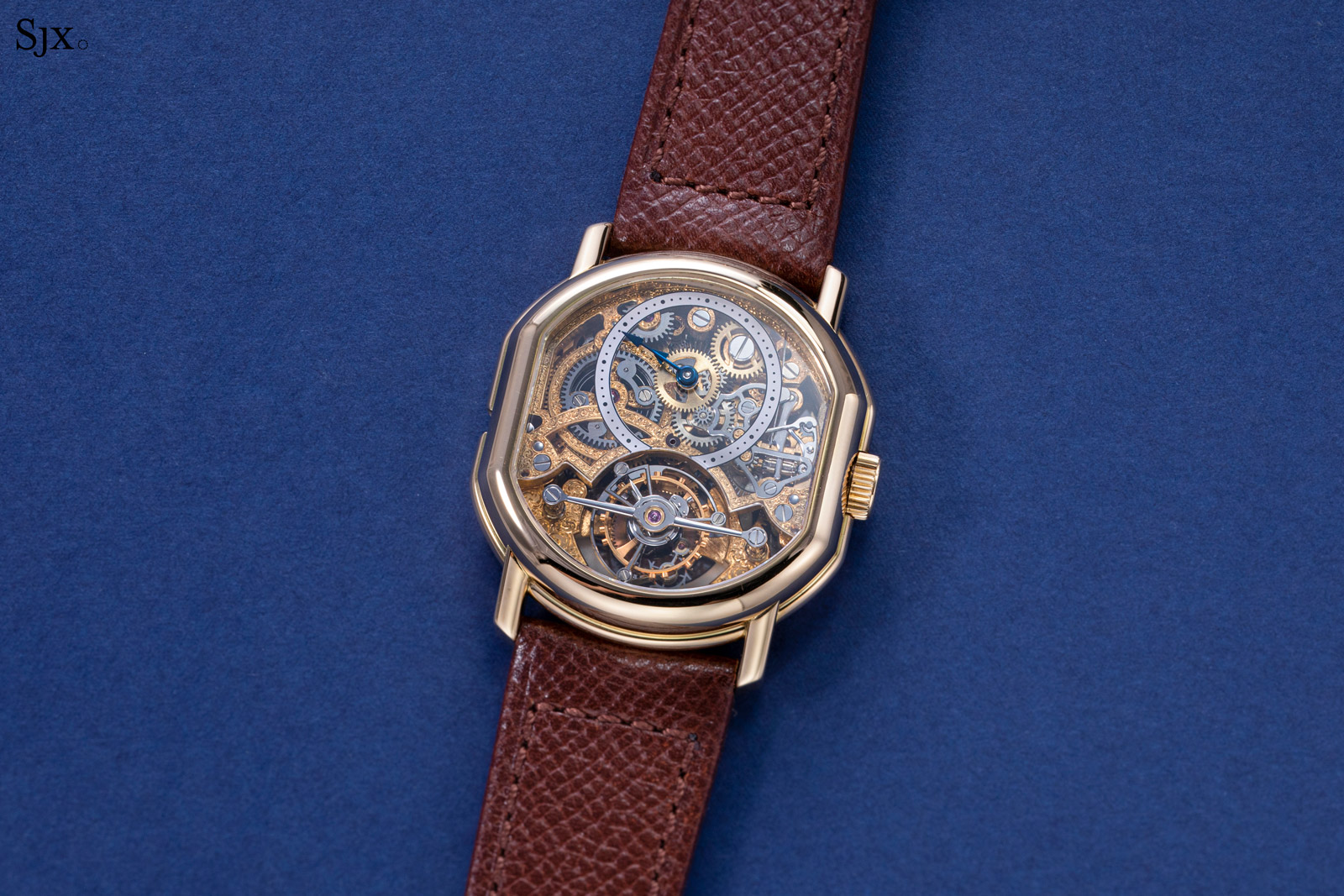
One of Mr Roth’s favourite mechanisms – as was the case for most watchmakers of his generation – is the tourbillon. And given that he worked at Breguet prior to setting up his own brand, it was natural that amongst his first watches was a tourbillon with a movement by Lemania, the same company that made most of Breguet’s movements at the time.
The flagship of his tourbillon wristwatches was the double-face skeleton, which is special on several levels. For one, it is one of the few top-quality tourbillon wristwatches of the late 1980s and 1990s, just before watches became widely appreciated, especially in Asia.
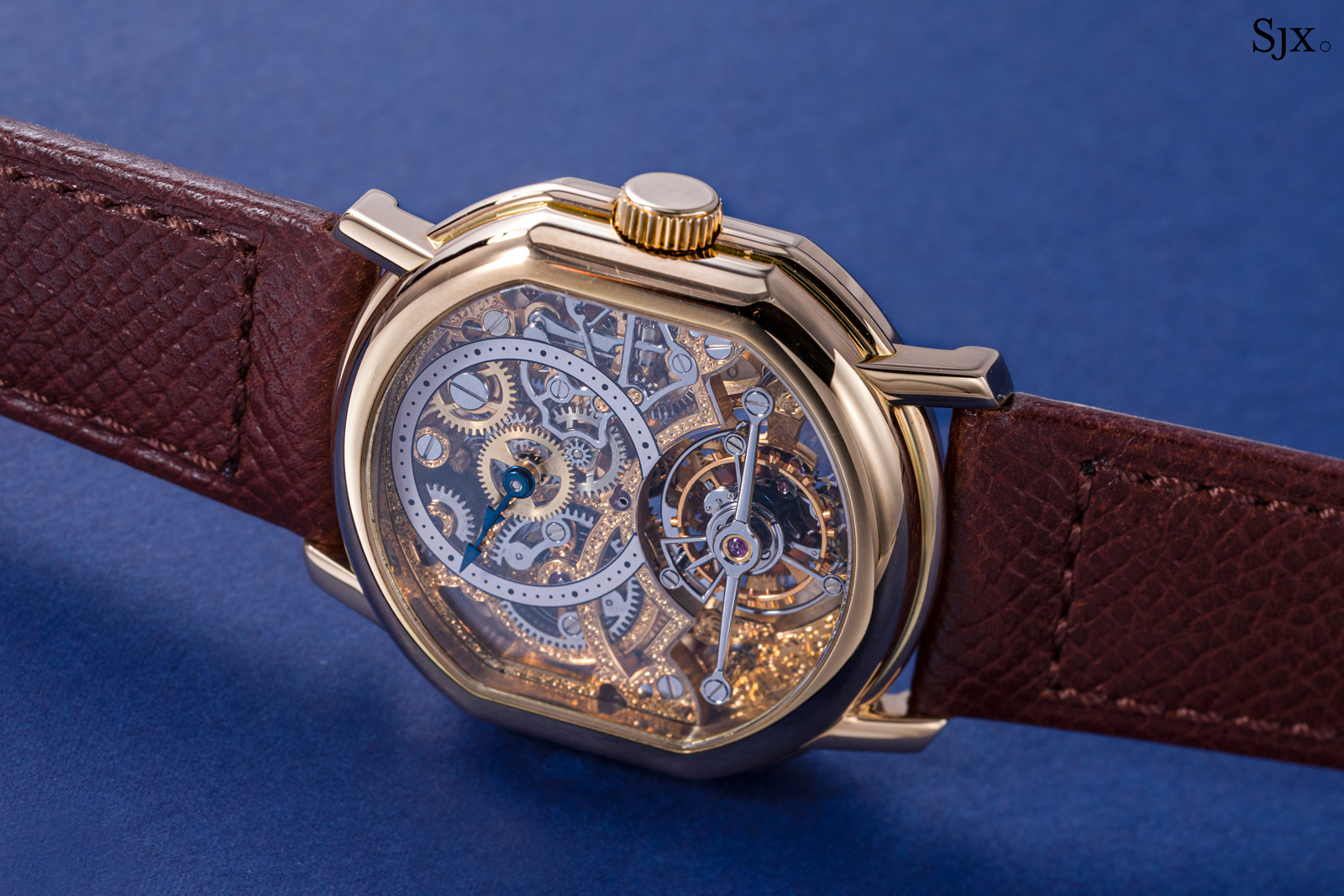
The design is novel yet coherent, with the elaborately decorated movement pairing perfectly with the unorthodox case shape. And unique to this model is the movement modified to have indications on both sides – the time and tourbillon on the front along with the power reserve and date on the reverse.
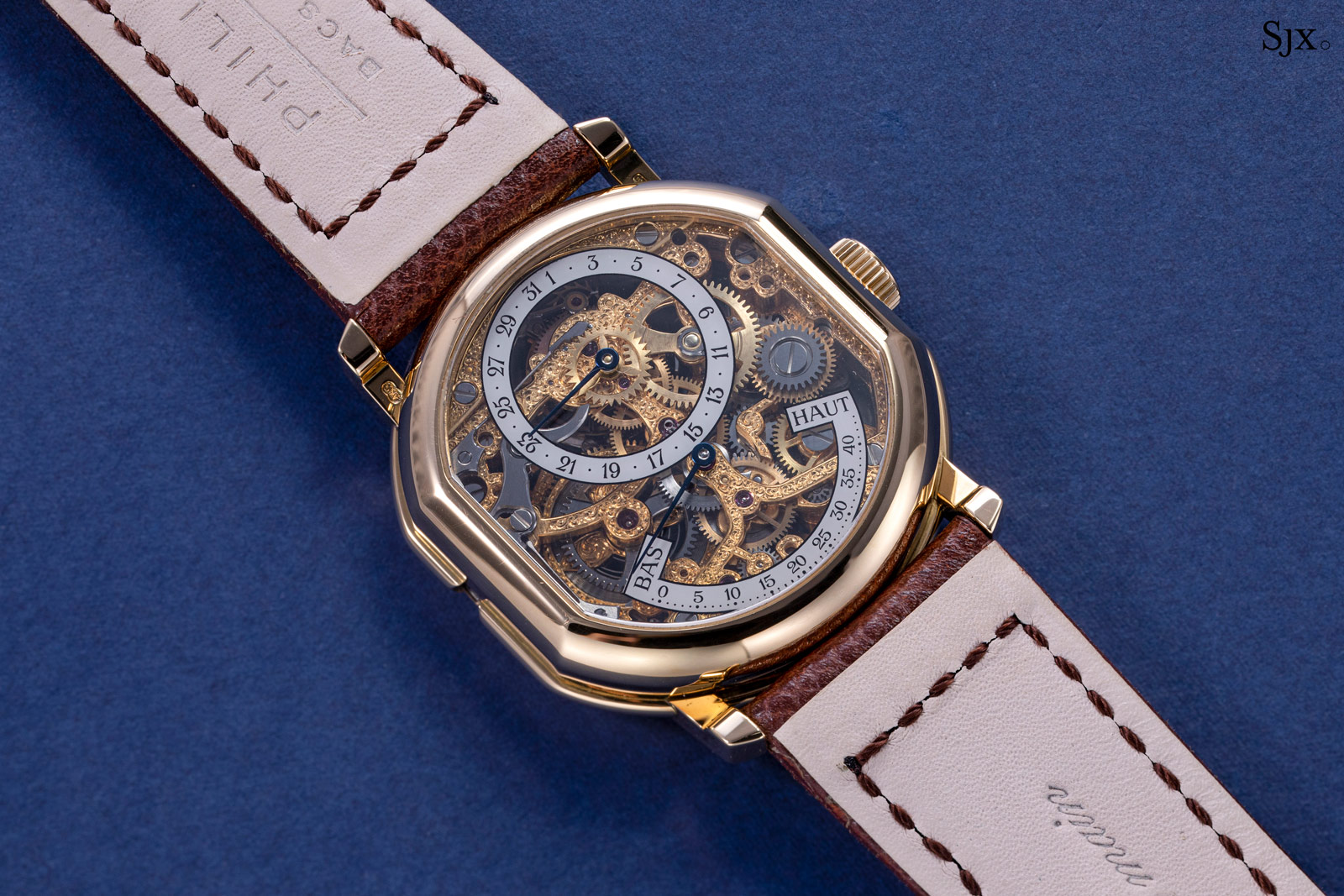
The hand-engraving on the skeletonised movement is a highlight
Importantly, unlike the standard tourbillon wristwatch that was powered by a movement delivered complete and decorated by Lemania, the skeletonised versions were worked on by independent artisans who specialised in skeletonisation.
The present example is a Skeleton Tourbillon with twin faces, a model the brand introduced in 1992, two years before it was sold to it to South-East Asian retailer The Hour Glass.
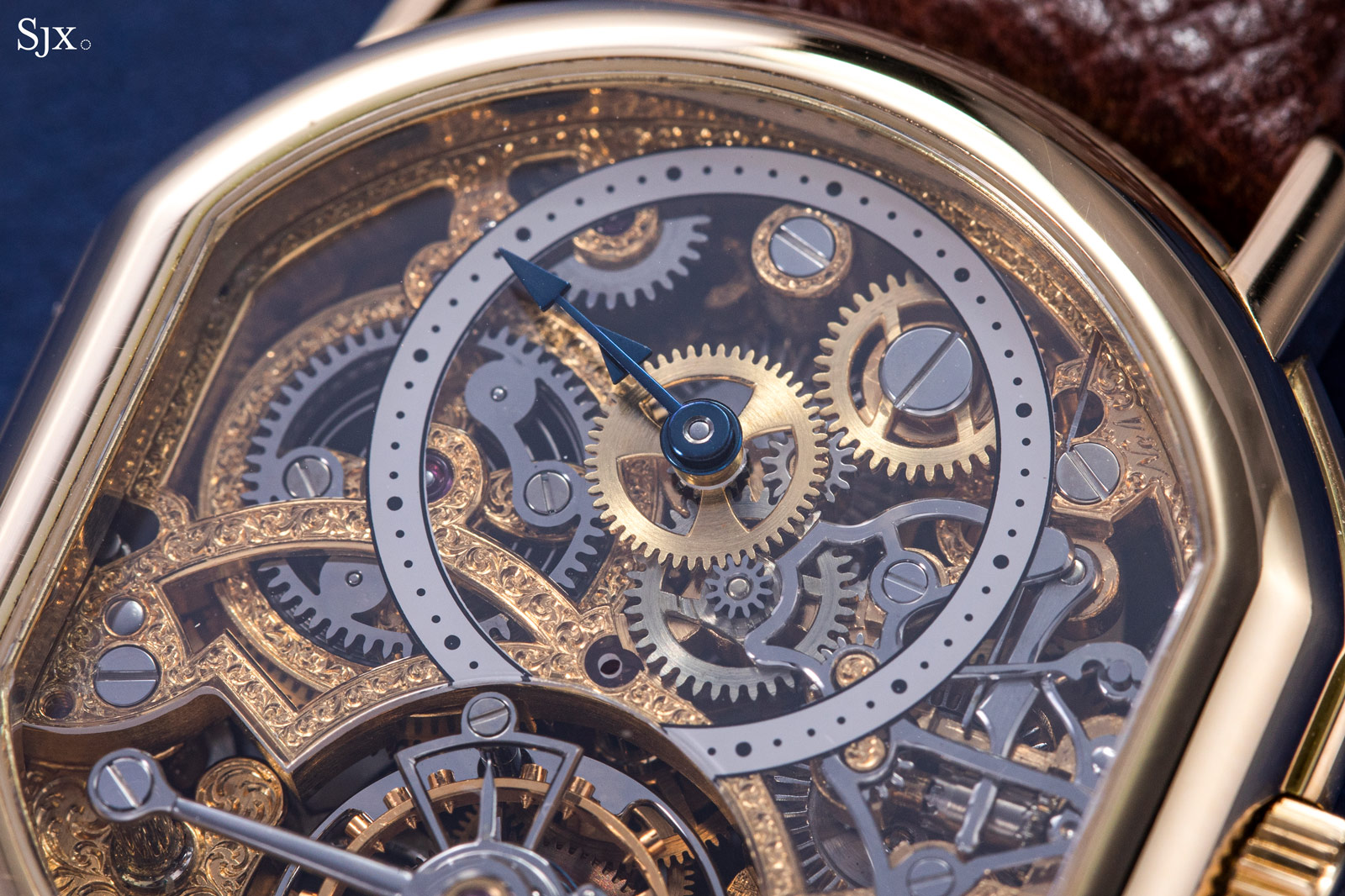
A tiny aperture has been cut into the sapphire disc to accommodate the canon pinion that carries the hands
Discreetly marked “No 1”, this example was the first of the series and possibly unique. While the standard version of the skeleton tourbillon has brass chapter rings for the indications on both dials, this has clear sapphire dials with printed scales for both faces. According to Phillips, there are no other known examples with this dial, making it possibly unique.
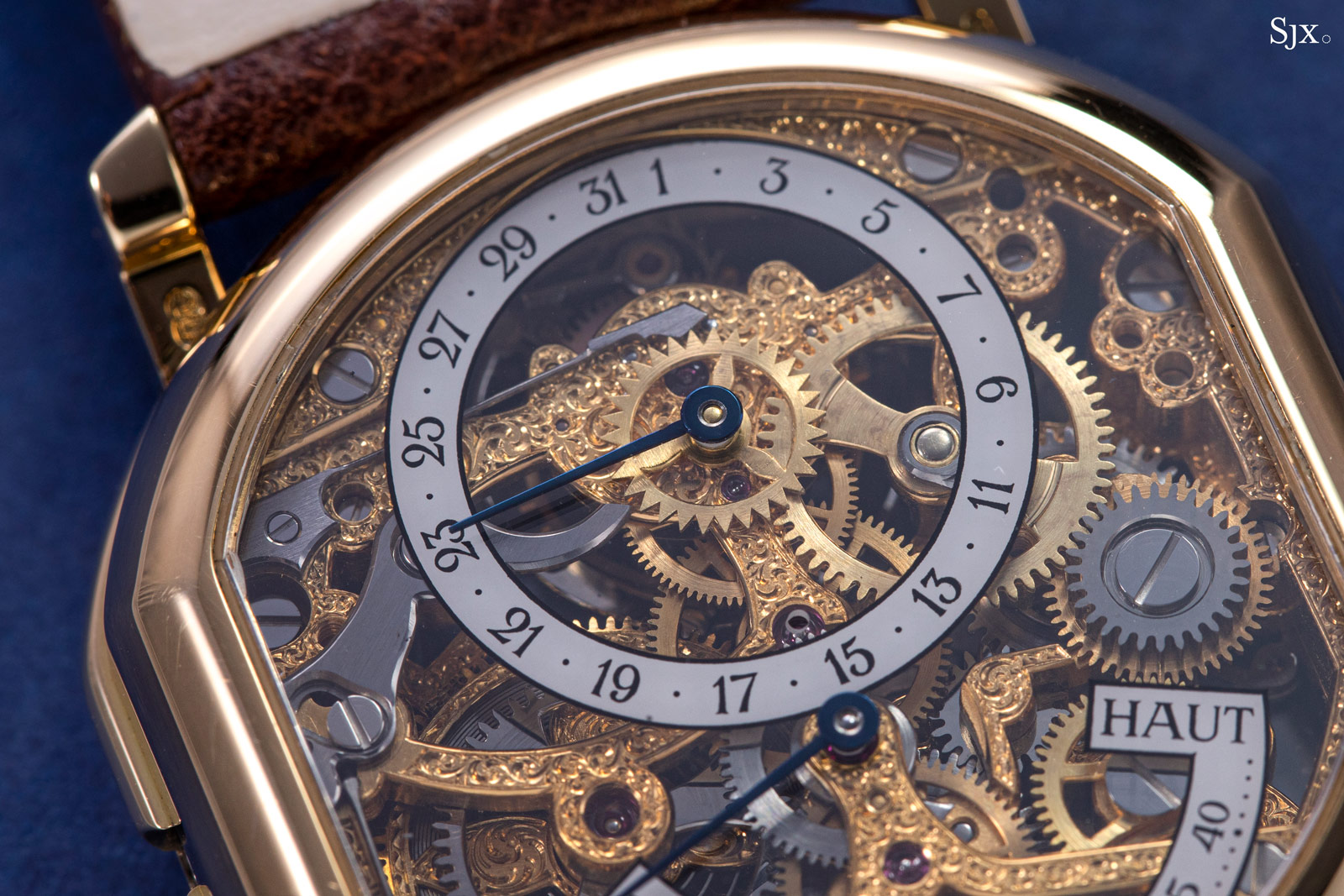
The date display
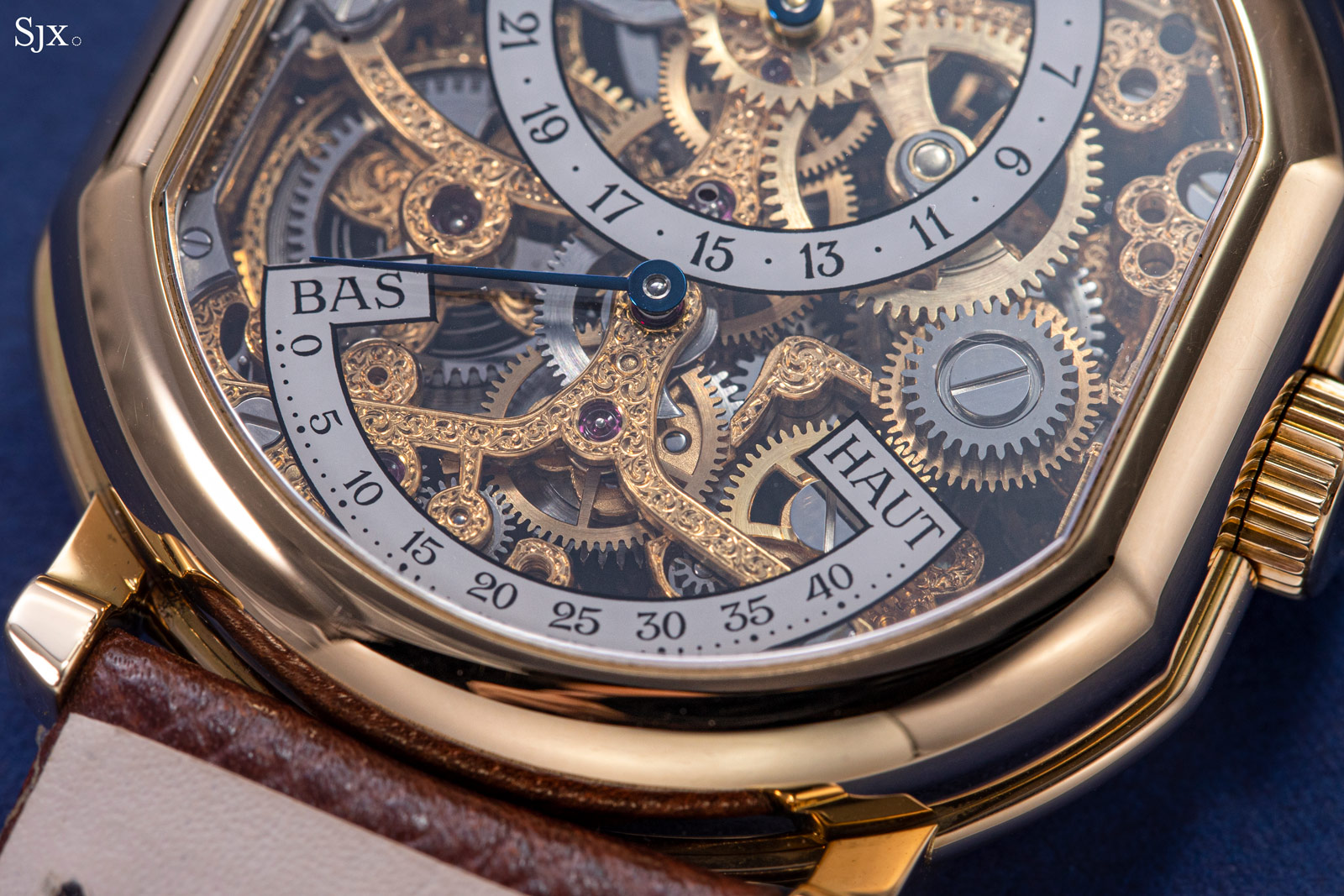
The power reserve indicator
And a further bonus is the fact that this was sold by Milanese store Pisa, one of the leader retailers of independent watchmaking in the 1990s. The watch is accompanied by its original certificate, box, and calendar stylus. It has a modest estimate of of CHF40,000-80,000, or about US$$42,500-85,000. Full lot details here.
Lot 224: Habring² x SJX Erwin “Star”
A project almost three years in the making, the Habring² Erwin “Star” was a milestone – our first-ever collaboration edition that was created to mark the 10th anniversary of this very site.
Limited to 50 pieces, the Erwin “Star” takes our founder’s love for independent watchmaking to reimagine a charming, unusual design from the past.
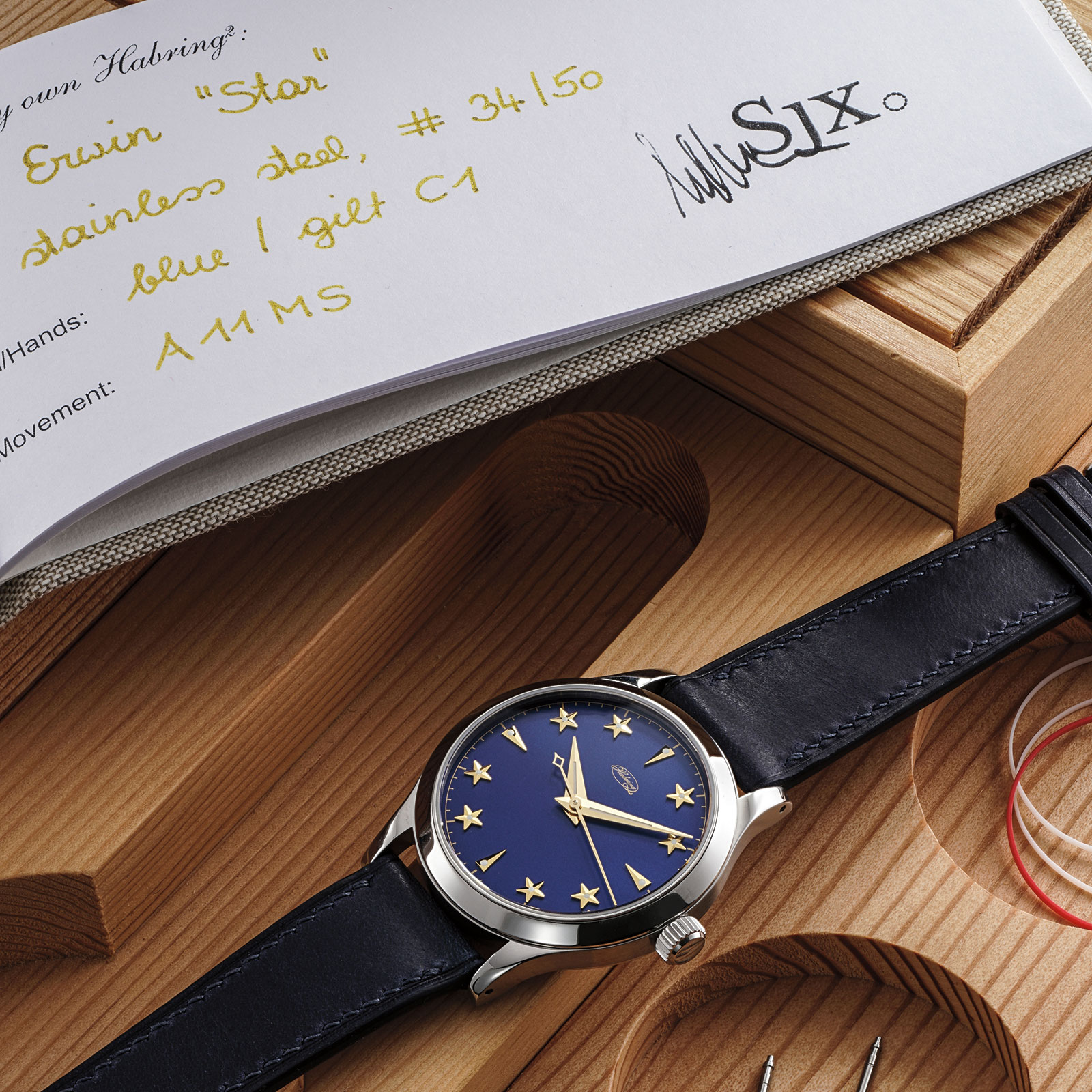
While the Erwin “Star” is affordable, it was inspired by something less accessible – vintage watches with similar “star” dials, most notably the Rolex Oyster refs. 6088 and 6089. Always six figures and occasionally a million-dollar watch, the “Stelline” or “Galaxy” dial Oysters are incredibly rare but Phillips happens to have a ref. 6089 “Stelline” in the sale just a few lots before the Erwin “Star”.
The Erwin “Star” took inspiration from these vintage rarities, but reinterprets the design with larger stars to give it a more modern aesthetic. And the stars sit on a casually elegant blue dial, creating a blue-and-gold palette that is always appealing.
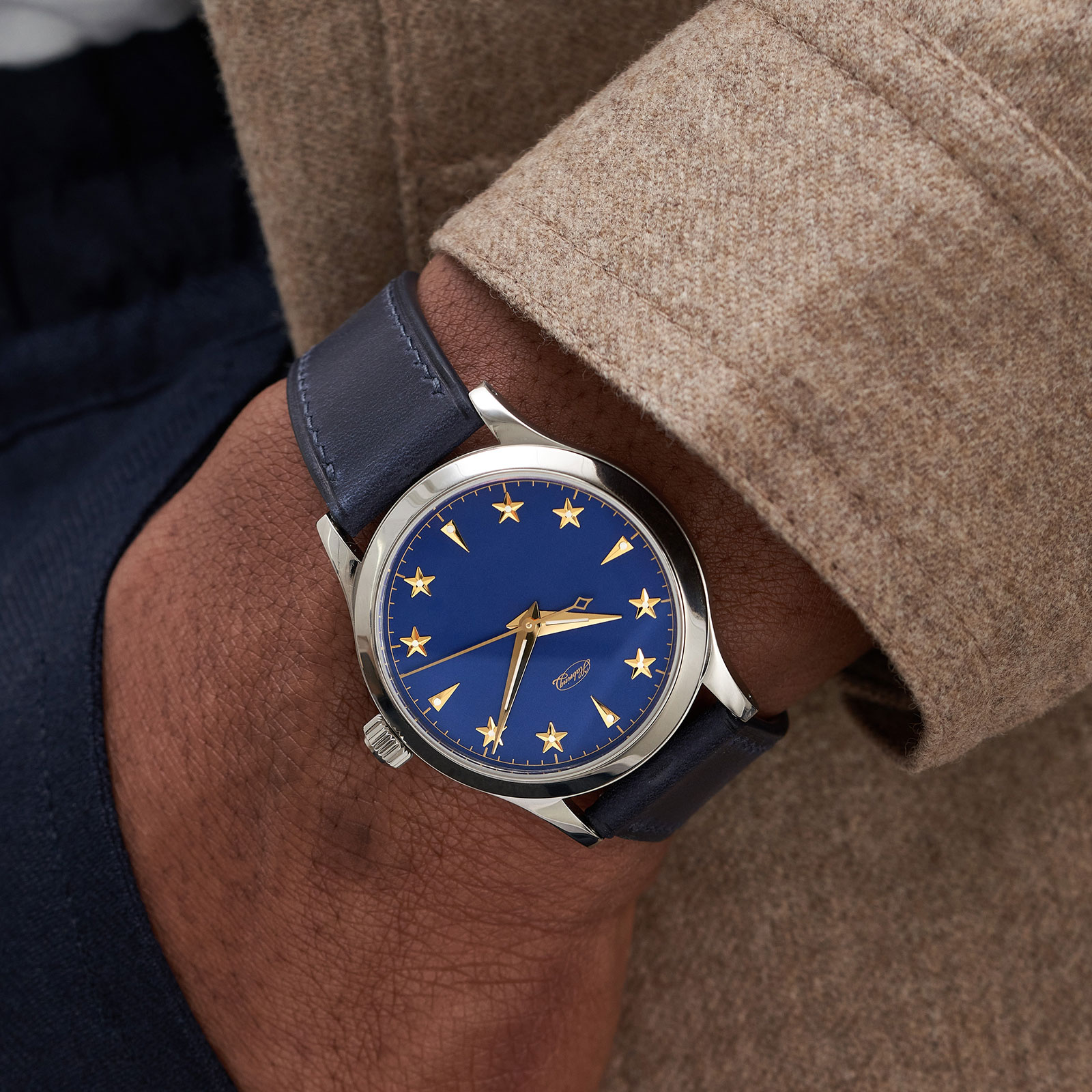
The foundation of the Erwin “Star” is a slim, time-only wristwatch with a hand-wind movement, but one with a little extra in the form of a deadbeat, or jumping, seconds, a complication typically reserved for pricier watches but one that has become a trademark of Austrian watchmaker Habring².
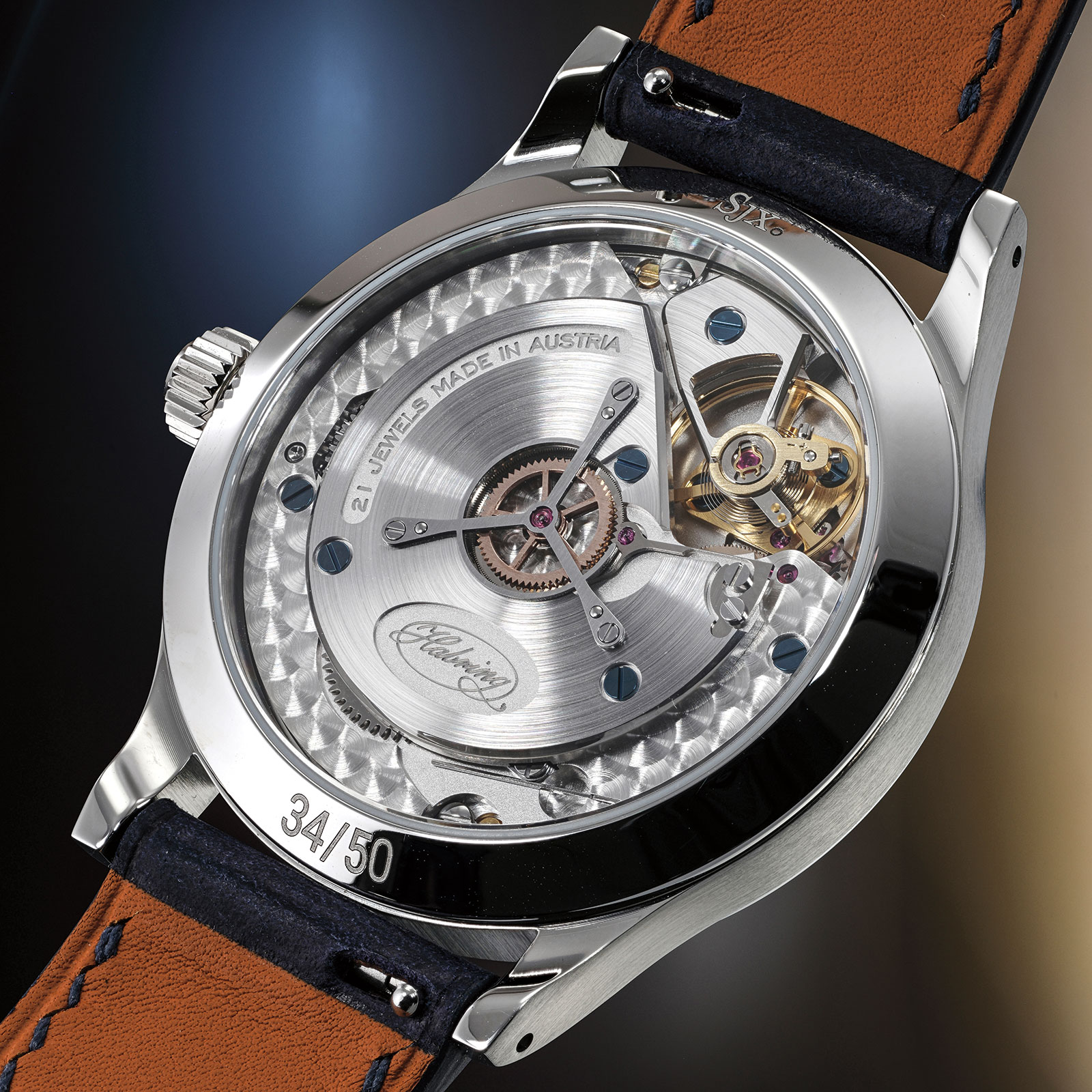
The Erwin “Star” SJX Edition is in like-new condition and includes all the original box and papers. It has an estimate of CHF4,000-8,000, or about US$4,200-8,500. Full lot details here.
Lot 297: Voutilainen Decimal Repeater “Unique Piece”
An important striking timepiece in the sale is undoubtedly the Voutilanen Decimal Minute Repeater. A watchmaker who started his career restoring antique timepieces at Parmigiani, Kari Voutilainen paid homage to his roots with his early watches, most of which relied on refinished vintage movements.
While all the vintage movements use by Voutilainen are meticulously modified and finished, it is the complicated calibres that stand out. Amongst the best are the handful of decimal repeater wristwatches he made, all of which started out as ebauches from the best movement makers like LeCoultre and Piguet. They also rank as one of the few contemporary wristwatches with the decimal repeater complication that originated in pocket watches.
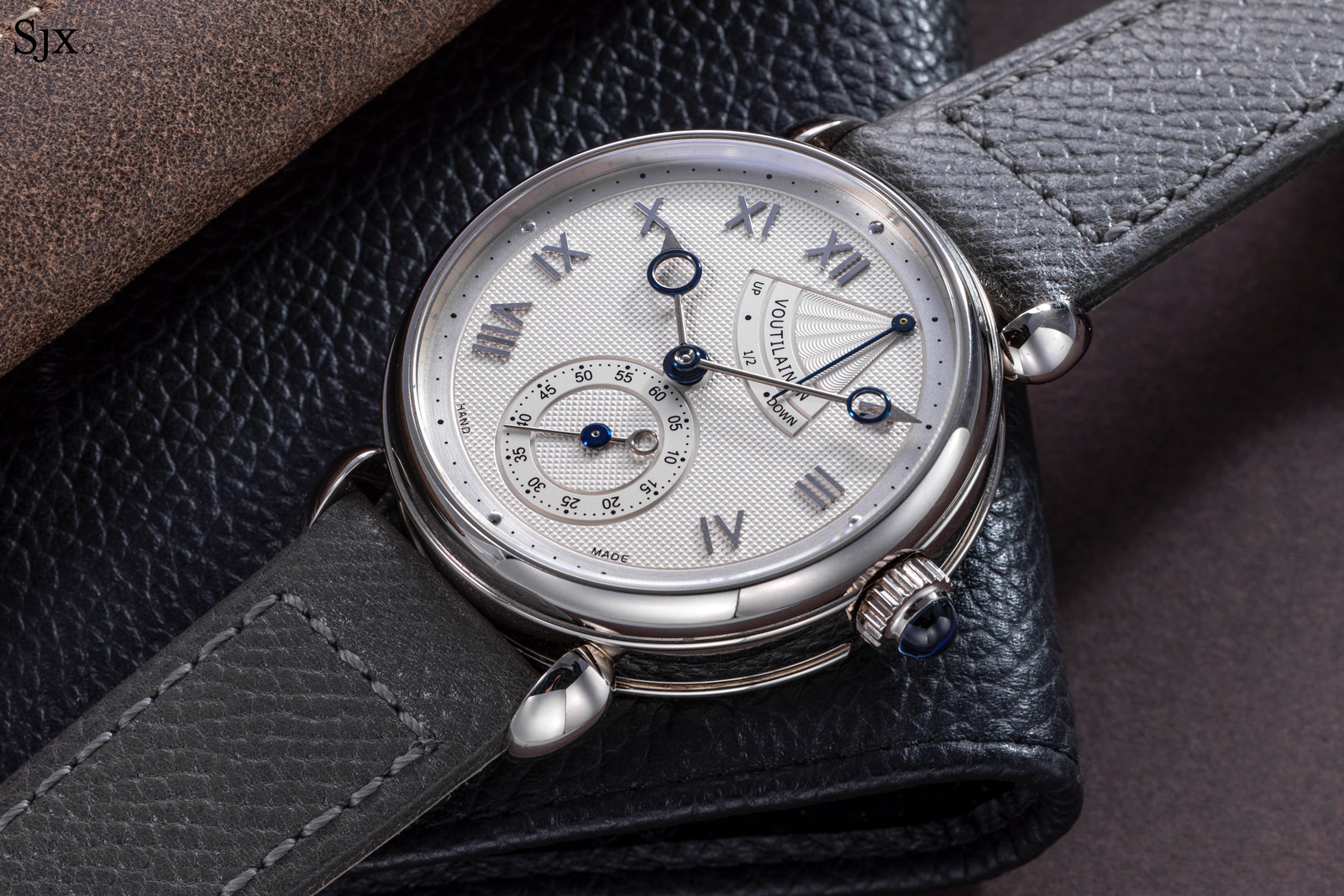
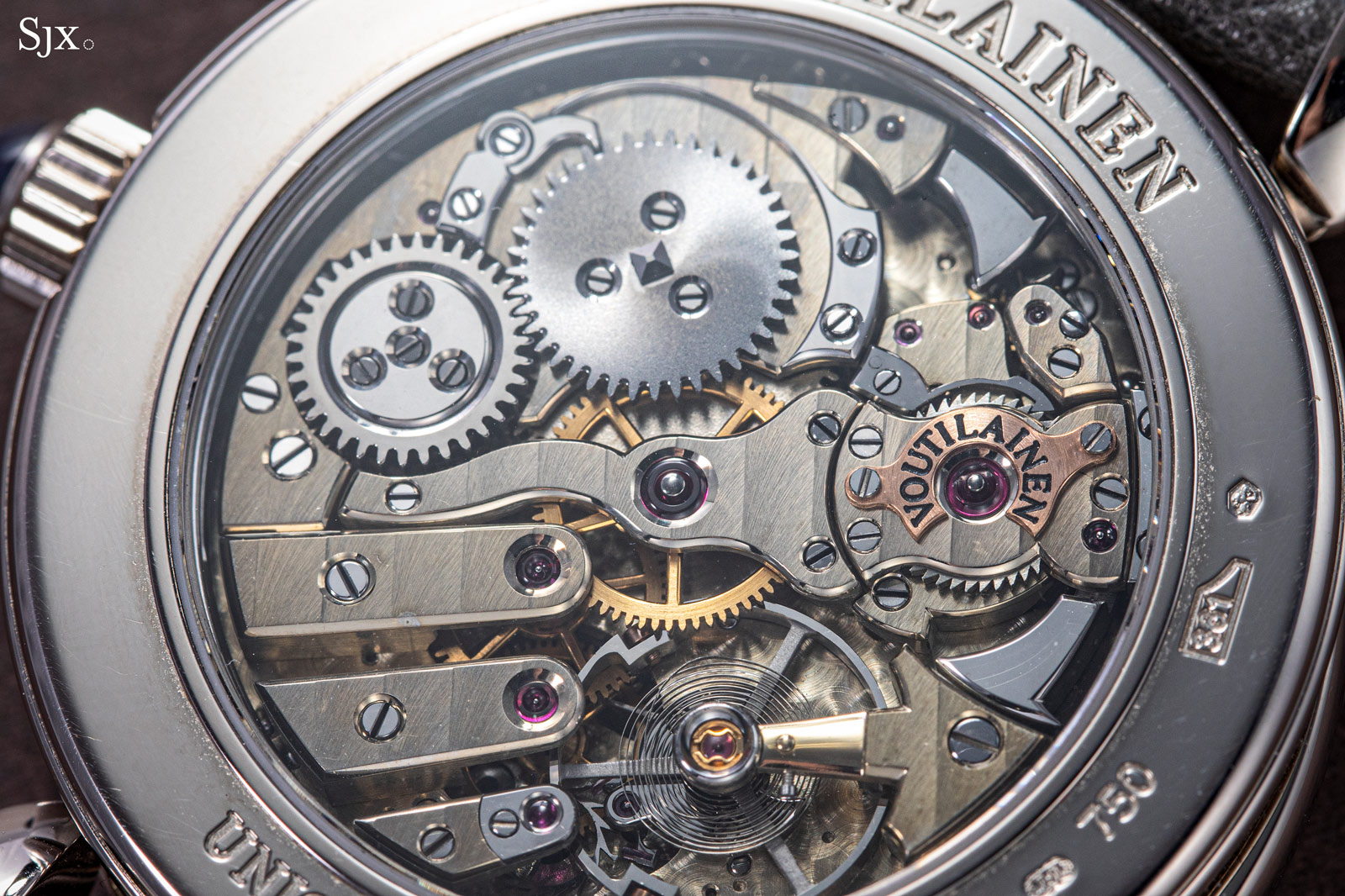
The difference between a decimal repeater and conventional minute repeater is a matter of chime: the latter strikes the hours, quarters, and minutes, while a decimal repeater instead strikes 10-minute segments, a more intuitive manner of striking the time. As a result, the maximum number of strikes for the individual minutes is reduced from 14 to nine, again improving ease of telling time.
Going by the layout of the movement, this example is perhaps based on a LeCoultre ebauche, like that found in the Masterpiece 7 Decimal Repeater. As is typical of Voutilainen, the ebauche has been thoroughly upgraded, both technically and decoratively. Most notable is the modification to the chiming mechanism that transform it from a standard to decimal repeater.
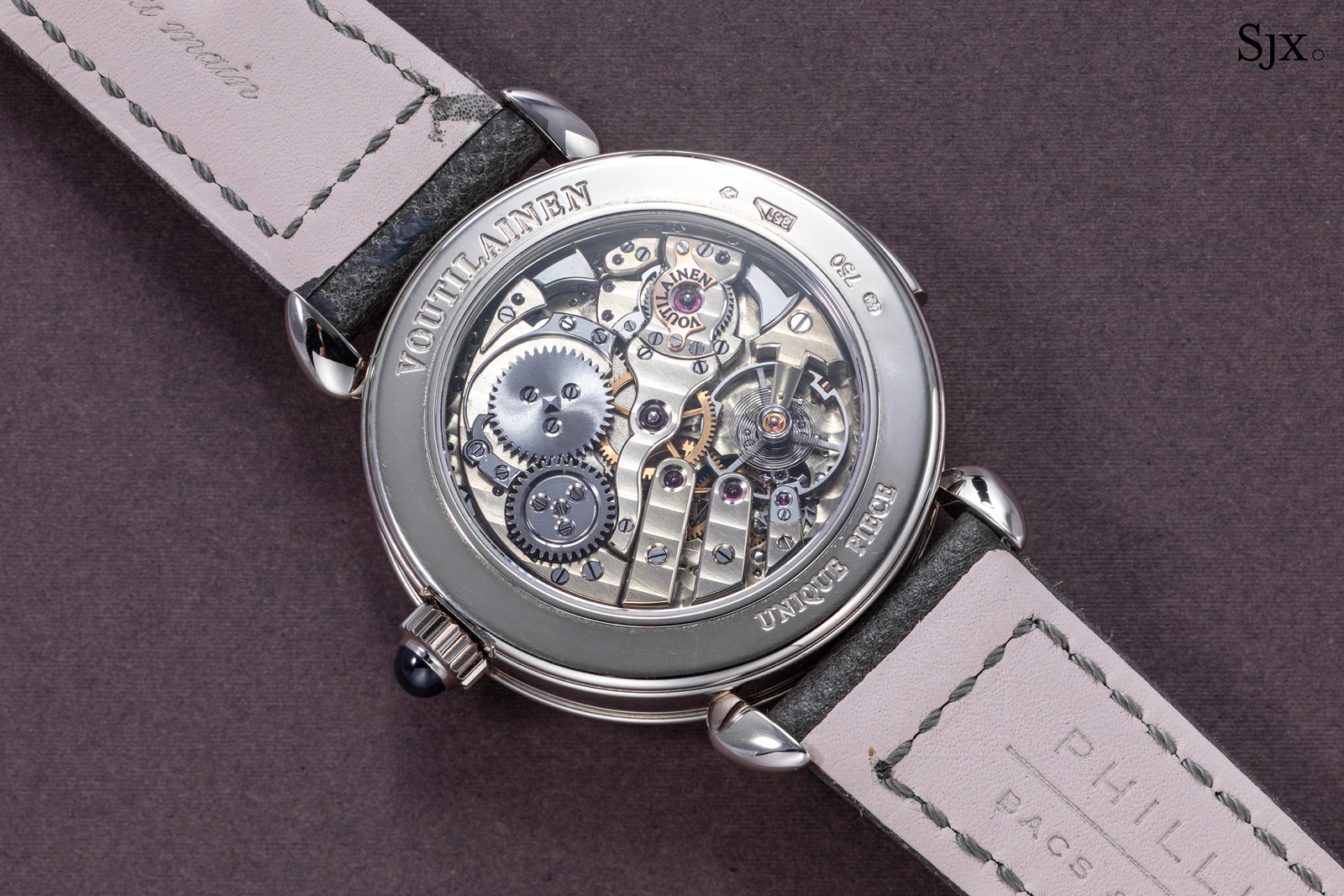
Other upgrades include the balance assembly, which is one of the few evidently modern components in the movement. It is made up of a proprietary, free-sprung balance with regulating weights mounted on recesses on the rim. And it is mounted on an arrow-shaped balance cock with a polished, rounded arm that was made by Voutilainen.
While the movement has been heavily upgraded, it retains an unmistakably old-school look that is not found in modern calibres. Complementing the classical layout is the meticulous finishing that Voutilainen is known for.
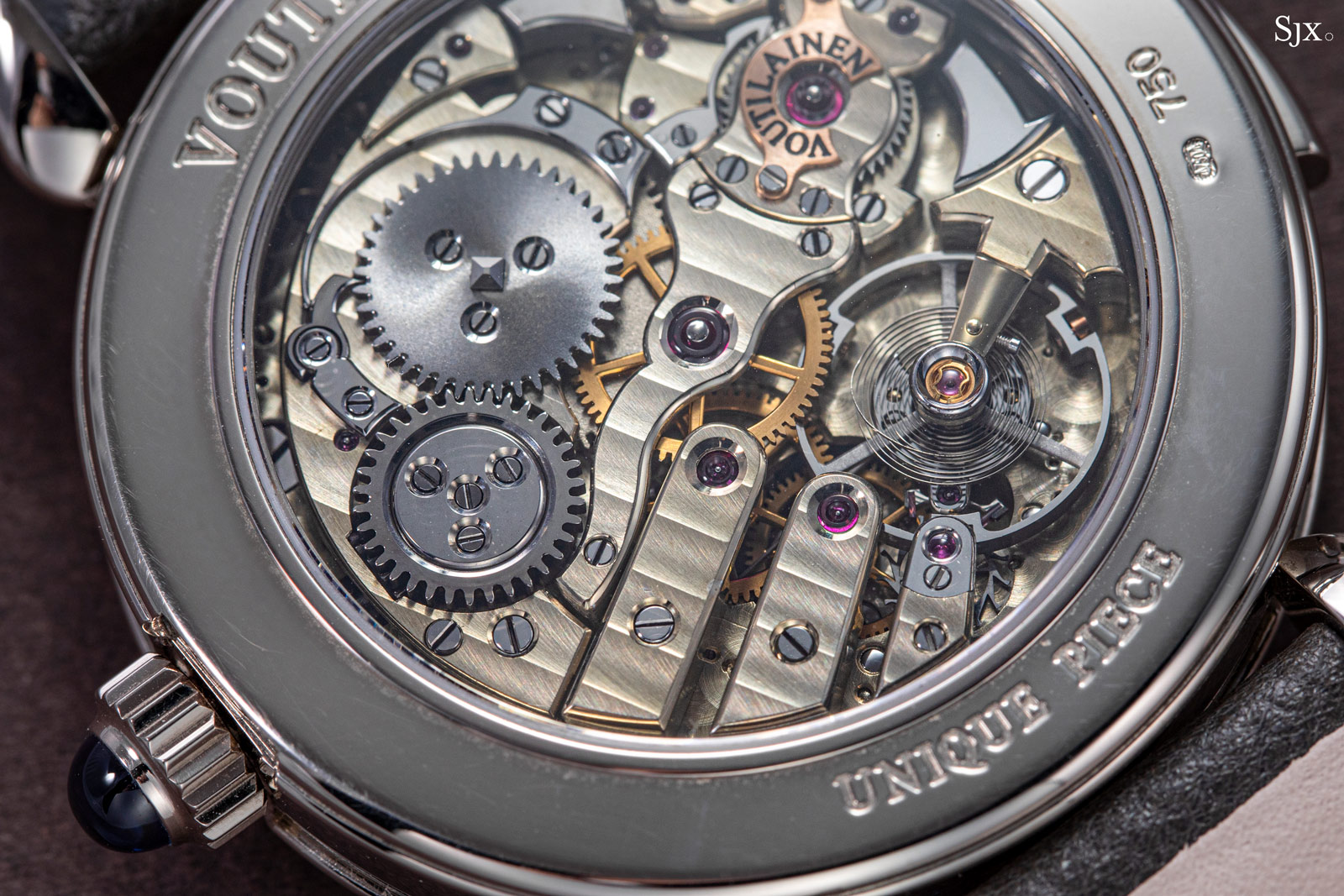
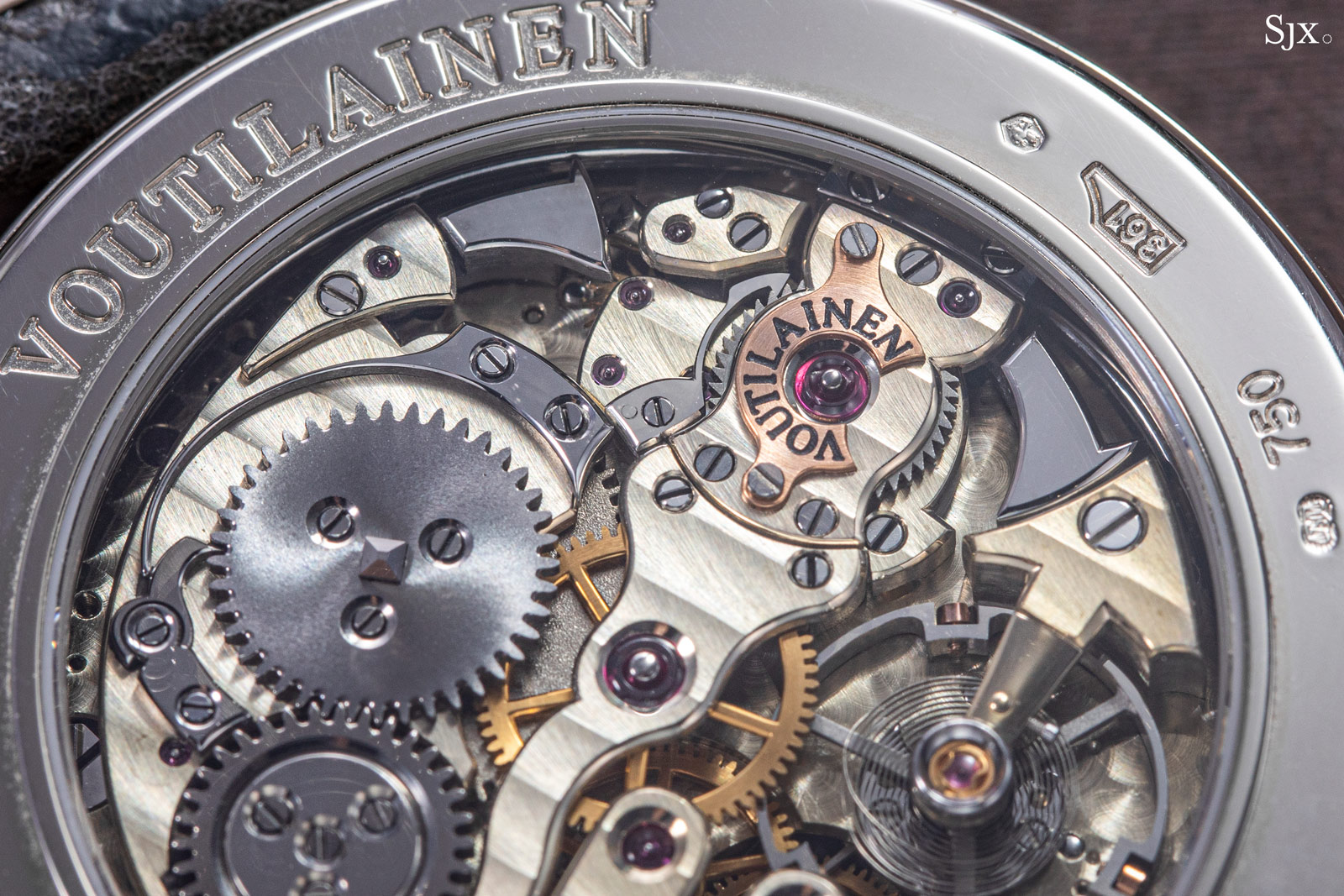
Like all of Voutilainen’s repeaters, the present example is unique, and engraved as such on the case back. The primary differences between the repeaters lie on the dial, both in terms of design as well as additional complications, which range from a second time zone to a regulator-style display. The present example is amongst the simplest known, with a power reserve indicator at one o’clock.
While each of the repeaters have a different dial, all the dials are decorated in typical Voutilainen style, as is the present example. The dial features traditional guilloche, applied numerals, as well as Voutilainen’s trademark two-tone hands.
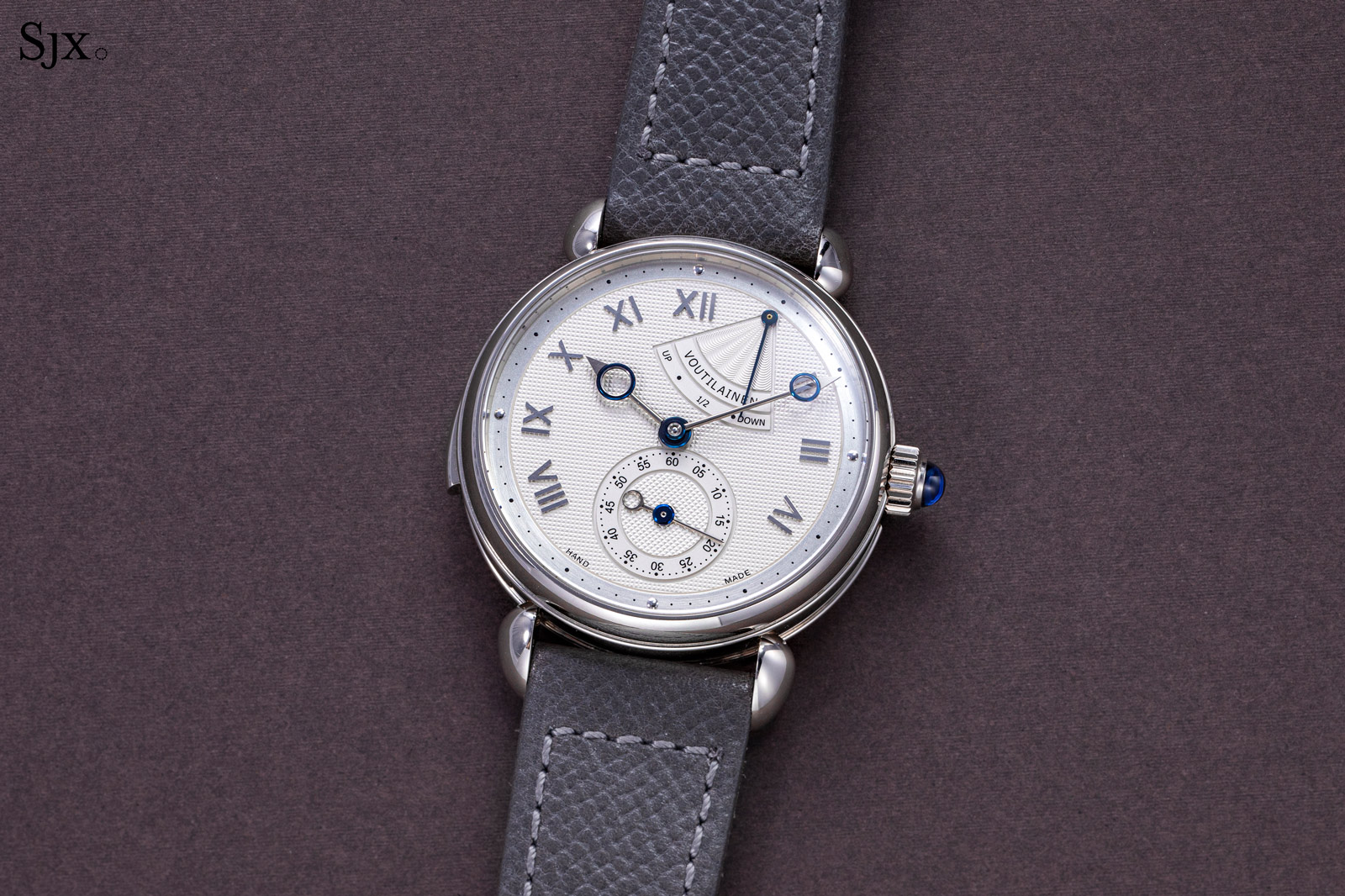
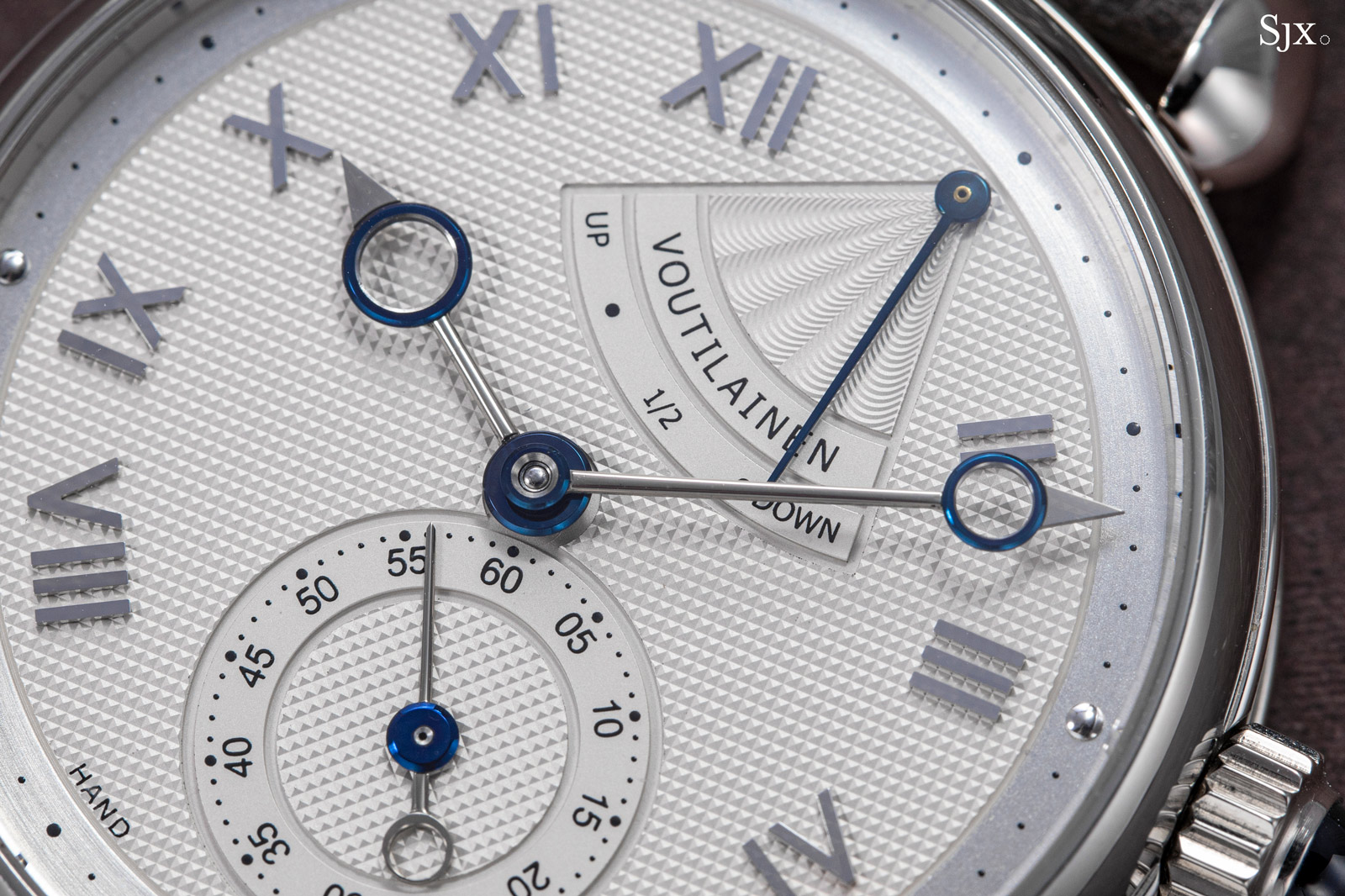
Showing modest signs of wear and including its original packaging, the Voutilainen Decimal Minute Repeater has an estimate of CHF100,000-200,000, or about US$106,000-212,000. Full lot details here.
NB: The author has an interest in lot 208.
Preview and auction details
All lots will be on show in Geneva during the run-up to the auction, which will happen at La Réserve.
Preview
May 4, 2:00 pm-8:00 pm
May 5, 10:00 am-7:00 pm
May 6-9, 9:00 am-12:30 pm
Auction
May 7, 2:00 pm (lots 100-200)
May 8, 2:00 pm (lots 201-300)
Hôtel La Réserve
301 Route de Lausanne
Geneva
Switzerland
For the full catalogue, as well as viewing appointments and online bidding, visit Phillips.com.
All times are local to Geneva, or Central European Time (CET), GMT+2.
Back to top.

